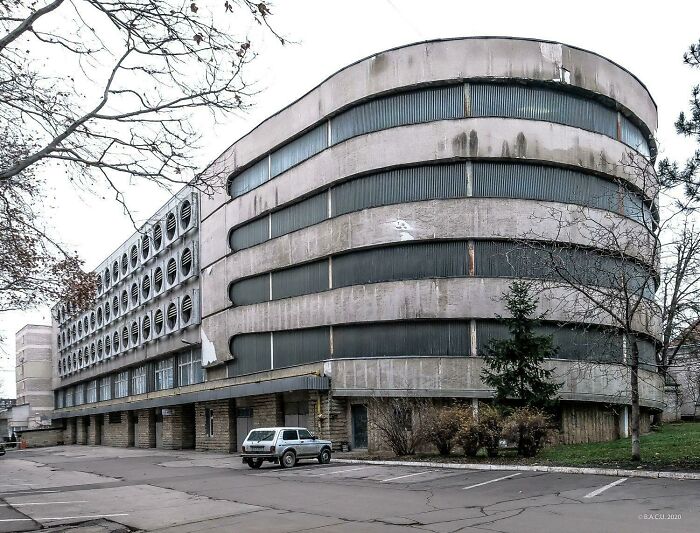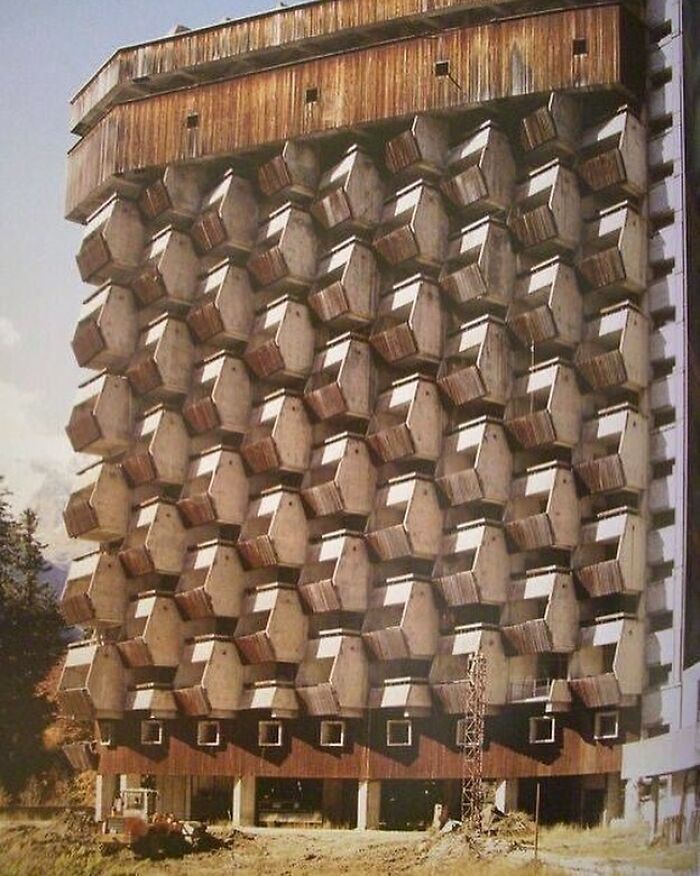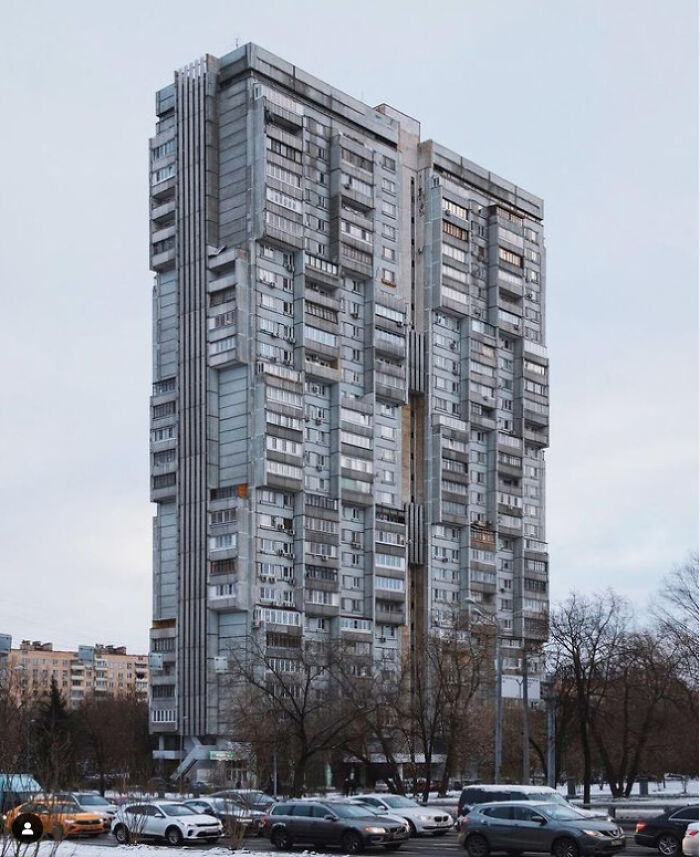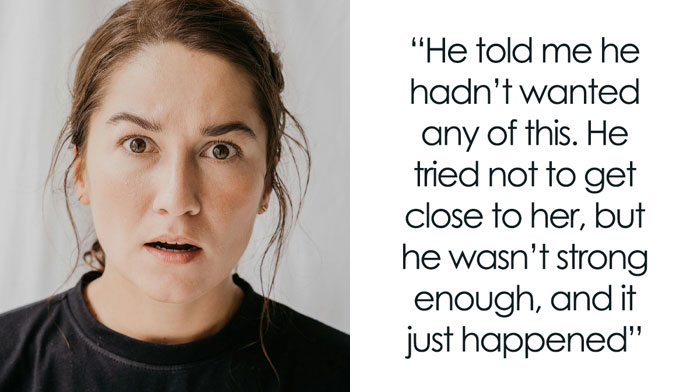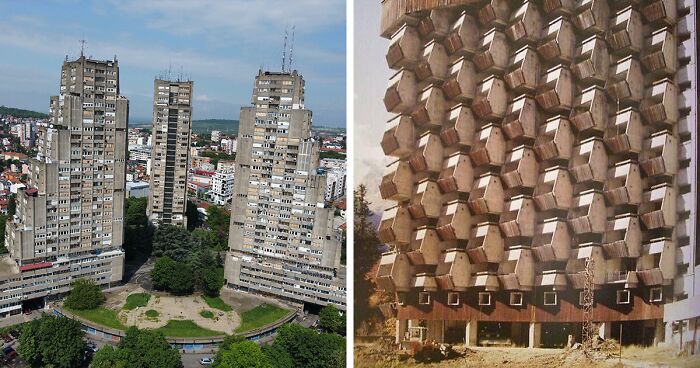
From Amazing To Downright Scary, These 30 Design And Architecture Decisions Are Far From Boring
There are many different branches of modernist architecture, from Art Deco and constructivism to expressionism and metabolism. However, not all 20th-century buildings get the care and attention that they might deserve. Enter, stage left, what’s known as socialist modernism—brutalist buildings that were erected in Eastern Europe during the Cold War, right up to the fall of the Soviet Union.
Imposing grey monoliths. Functional yet also possessing gorgeous but deeply bizarre designs. These are just some of the ways that you can describe these buildings. We’ve collected some of the most impressive examples of socialist modernism designs from the r/SocialistModernism and r/SocialistModernism1 online communities to share them with you. Scroll down, upvote the pics that impressed you the most, and let us know if you’ve seen any of these architectural marvels in person.
This post may include affiliate links.
Prefabricated Elephant Slide In Dresden, East Germany, Cca 1965 #sicmod
Spodek ("Saucer") Multipurpose Arena Complex In Katowice, Poland. Built In 1971
Military Medical Academy Complex - Belgrade, Serbia
Modernist architecture, as a whole, tends to focus on minimalist, functional designs that reject over-the-top decorations. These buildings are also defined by the materials used, namely lots of glass, steel, and reinforced concrete.
But with so many different ‘flavors’ of modernism, no two architectural subgenres are exactly alike, even if there’s significant overlap between them. Socialist modernism, for instance, is very brutalist and functional, and you won’t mistake it for, say, the De Stijl or the post-war Japanese ‘metabolism’ styles.
State Museum Of History, Uzbekistan (1968-70) By Yevgeniy Rozanov And Vsevolod Shestopalov
Bus Stop In Kazakhstan
Sanatorium/Rehabilitation Center, 1985, Dombay, Karachay-Cherkess Republic
Socialist modernism is the style of architecture erected in Central and Eastern Europe between 1955 and 1991. However, these ancient Eastern Bloc designs aren’t all given the care that they deserve. As time marches on, many of these giant slabs of history are falling into disrepair.
However, there are some that aim to preserve these shards of peculiar design. The Guardian notes that the Bureau for Art and Urban Research (BACU, aka the Birou pentru Artă şi Cercetare Urbană) began to document and preserve these buildings and their heritage in 2014.
The Iron Fountain - Gyumri, Armenia
Pov: Soviet Chad Calling Your Girl Over Satellite Phone
The Palace Of Ceremonies, Tblisi, Georgia
“We aim to revitalize this heritage not only for symbolic reasons but because we believe in these elements that managed to defy some of the ideological requirements, giving the urban space a certain flavor so characteristic of those times,” Dumitru Rusu from BACU told The Guardian.
“Boulevards, public buildings, living units, and monuments, they all are a clear reflection of the social and cultural context of the socialist period.”
Hala Arena In Poznań, Poland. An Indoor Sporting Arena Built In 1974
The Strange Beauty Of Soviet Bus Stops
Hotel "Vrbak", Novi Pazar, Serbia. Built In 1976 With A Bit Of An Oriental Touch To Suit The Ethnicity That Lives In This Area
This is gorgeous.. this whole area has so much movement and the building in the center looks like it's from an alternative dimension
The initiative kick-started by BACU also maps socialist modernist buildings that can be found in Europe, using an online tool on their website. This way, they’re promoting awareness of countries’ architectural heritage that many people might have walked past a hundred times without realizing what they were looking at in the skyline.
When The East Meets The West
Bodiul's Viewpoint Platform, Near Chisinau, Moldova, Built In The 60s (C) Bacu/ Photo Bu Dumitru Rusu
Mosaic In Former-Soviet Central Asia
The r/SocialistModernism1 subreddit appears to be a branch of the BACU project to raise awareness of this style of architecture on various internet and social media platforms. Their goal is to protect, monitor, research, and preserve various socialist modernist buildings, monuments, parks, squares, as well as “entire districts and green areas.”
Sevan Writer's House
Rudo Skyscrapers, Just Took The Photo Now
Ah Konjarnik, in Belgrade. My grandma lived here. Views from the roof are AMAZING.
Museum Of Contemporary Art, Belgrade [oc]
The first phase of BACU’s project is all about analysis and research while the second one focuses on regulations and educating the authorities and locals about the socialist modernist cultural heritage. The project also aims to unite everyone who is interested in architecture and preservation, from architects and urban planners to artists, activists, historians, and anyone else.
Mountain Kosmaj, Serbia. Built In 1971 Architect Gradimir Medaković And Sculptor Vojin Stojić (C) Bacu / Photo By Dumitru Rusu
Lake Sevan Viewing Platform [oc]
Trade Fair Center, Accra, Ghana, Designed By Vic Adegbite, Jacek Chyrosz, And Stanislaw Rymaszewski In 1967. One Of Many Collaborations Between African And Eastern European Planners From This Era
As time moves on, the philosophy of how we build and shape our cities shifts as well. It’s important to find compromises between the artistic visions of capable designers and what the people who will be living in the area truly need. Every new project is an opportunity to do better and better. Of course, what the 'better' means will depend on what society as a whole values at the moment.
Genex Tower
Tuzla Bank, (Now Nlb) Tuzla, Bih, Built In 1977, Architect V.stojanović © B.a.c.u. / Photo By Dumitru Rusu
Abandoned Lakeside Building, Chisinau
Architectural innovation doesn’t have to be radical, as Dr. June Komisar from Ryerson University told Bored Panda during an interview, previously. “[It] can be an incremental change that will benefit the users and society at large. At the moment we have a huge opportunity to build sustainable buildings that approach or attain a 'net zero' energy cost. By using local and/or sustainable materials, designing for passive and/or active solar and wind power, designing for very low energy usage, and renovating and adapting existing buildings we can help to mitigate climate change,” the expert in architectural design and the history and theory of architecture said.
[oc] Fontana Complex, New Belgrade, Serbia. Built In 1968, Architect Uroš Martinović
I really think some of these need more information. Are they residential, industrial, abandoned, radioactive (🙄) etc.
Home Furniture Store In Bucharest, Romania
Derzhprom
According to the expert, it’s important to balance the aesthetics of the building and its relationship to the site with its structural integrity and sustainability. “Understanding the site conditions and evaluating other buildings using the same construction techniques and materials can help avoid problems,” she pointed out how architects can aim to avoid at least some issues during the actual building process.
Time Stopped
i mean this is a picture. even if the clock wasn't broken, time would be "stopped"
Brutal Buildings In Novi-Sad, Serbia
Communal Buildings In Berlin's Eastern Half From The Ddr
What do you think about socialist modernism, dear Pandas? Does this architectural style appeal to you and do you think it's heritage that is worth saving? Which of these photos left the biggest impression on you? Have you ever seen any of these buildings in person? Share your thoughts and experiences in the comments!
The Former Memorial House Of The Bulgarian Communist Party, (Buzludzha Monument), Shipka Pass, Bulgaria, Built In 1981, Architect Georgi Stoilov (C) Bacu / Photo By Dumitru Rusu
"Karaburma" Dorm, Belgrade, Serbia [oc]
Panorama Resort - Štrbské Pleso, Slovakia
Not a recent pic if the cars are any guide. Here's a more recent pic 78623102-6...4cd7bb.jpg 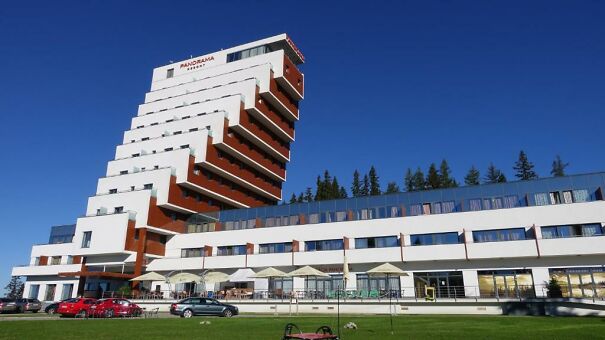
Post-Soviet Modernist Architecture In Central Asia
One Of The Two Halls Of Parting, Memory Park (Kiev) Ukraine. Built 1968–1981 Architect: A. Miletsky Concept, Design, Architectural Plastic Copyright Modeling Of Wall Of Remembrance By Artists Ada Rybachuk And Vladimir Melnichenko (C) Bacu / Photo By Dumitru Rusu
Town Square View Towards "Zlatibor Hotel" In Užice, Serbia [oc]
Lenin V. Palace Of Sports - Bishkek, Kyrgyzstan
Chisinau State Circus
Palace Of Rituals, Tbilisi [oc]
I can understand how the durability of building with concrete and rebar had the architects eager to build with it. But did none of them ever consider how moldy and filthy they would become?
Cafesjian Art Museum - Cascade, Yerevan, Armenia. Design 1975-1980 Built 1985-2000 Architects Sargis Gurzadyan With Jim Torosyan, Aslan Mkhitaryan (C) Bacu / Photo By Dumitru Rusu
Sports And Concert Complex - Yerevan, Armenia
Central Station - Sofia, Bulgaria
Iaşi, Romania
Lviv Bus Terminal Stryiska 109, Lviv, Built In 1980 Architect: V. Sahaydakivsky, M. Stoliarov Engineer: V. Boykiv, A. Yefremov. (C) Bacu / Photo By Dumitru Rusu
The Aul Residential Complex, Tole Bi 286/1, Almaty, Kazakhstan Built In Stages Between 1986-2002 Architects: B. Voronin, L. Andreyeva, Yu. Ratushnyi, V. Lepeshov, V. Ve, M.rakhimbayev Designers: S. Matveyev, G. Klochkovskaya, V. Zinstein, S. Kainarbayev (C) Bacu / Photo By Dumitru Rusu
it looks very crowded. I could get claustrophobic in those balconies.
Vojni Soliter (Military Skyscraper), Belgrade
[oc] Entrance Group With Concrete Decor Elements In New Belgrade, Serbia
Bank Of Georgia
The Monument House Of The Bulgarian Communist Party - Buzludzha, Bulgaria
"Romanița" Collective Housing Tower For Small Family Units, Chisinau, Moldova, Built Between 1978-86, Architect: Oleg Vronsky With O. Blogu, S. Crani, N. Rebenko And P. Feldman. Engineer A. Marian. © Bacu/ Photo By Dumitru Rusu
Livezeni Coal Mine. One Of The Largest Underground Mining Exploitation In Romania Located In Petroşani - One Of Six Cities In The Jiu Valley Mining Exploitation Region Of Hunedoara County. It Was Built In 1980
Palast Der Respublik (Palace Of The Republic), East Berlin, Ddr
Residential Building In Tbilisi [oc]
The Business Building Of "Energoprojekt" In Belgrade, Serbia. Built In 1982
Olympic Mascot Mishka (1980) On An Apartment Block In Osh, Kyrgystan. © Bacu / Photo By Dumitru Rusu
Monument On Freedom Hill By Janez Lenassi In Ilirska Bistrica, Republic Of Slovenia, 1965. (C) Bacu © Bacu / Photo By Dumitru Rusu
Brace Jerkovic, Belgrade, Serbia
Detail Of The Skyscraper And The Stormy Sky In Novi Sad [oc]
Moscow, Russia
[oc] Building In New Belgrade, Serbia
New Belgrade Under Construction, 1980's. #socmod Photo Via #socialistmodernism #socheritage #socmodernism #brutgroup #isc20c
So, when you come in go down the hall and make a left, then down the hall make a right. Then down the hall another right then a left then another left then a right and one more right and we're the third door on the left.
Omldinskih Brigada Street, Belgrade, Serbia
Famous 'Mercedes' buildings :) Because from the above they look like Mercedes logo
Centrum Department Store At Suhl, East Germany, (1969)
The Bank Of Georgia’s Headquarters - Tbilisi, Georgia
Lamela Bilding -Blocks 61,62 (Aka Panonian Sailboats), Belgrade, Serbia, Built In Sistem Rad-Balency - Between 1974-80 Architect Milan Miodragovic. Urban Design Josip Svoboda. (C) Bacu / Photo By Dumitru Rusu
Glavna Posta / The Central Post Office Of Skopje (Part Of The Ptt Telecommunications Center), Detail Skopje, Republic Of North Macedonia Built In 1972-74. Urban Planning: Kenzo Tange (1960s) Architect Janko Konstantinov (C) Bacu / Photo By Dumitru Rusu
A lot of these buildings could benefit from a good power wash! Maybe the concrete they used couldn't withstand the pressure !?!
The Immaculate Conception Roman-Catholic Church, (Biserica Romano-Catolică "Neprihănita Zămislire") Orșova, România. Built Between 1972-1976 Architect Hans Fackelmann. © Bacu / Photo By Dumitru Rusu
Nis, Serbia
The Blinov Sports And Concerts Complex - Omsk, Russia
[oc] The Stunning Hotel Roman: Baile Herculane, Romania. Built 1974-76. Architect Salumita And A. Mureșan. Hotel/Sanatorium, Still In Use. Built Over A Roman Baths From 107ad
Leipzig Gewandhaus, Germany, Designed By Rudolf Skoda In 1975
Prague, Cz
Mykolajiv Train Station, 2049 [oc]
looks like an place in some zombie movie? hmm imma go think about it
[oc] Theater In New Belgrade, Serbia
Kej Oslobođenja 8, Belgrade, Serbia
Cerak Vinogradi, Belgrade, Serbia. Picture Taken In The '80s
Abandoned Hotel Near Lake Balaton, Hungary
Lower Cable Car Station In Chisinau, Moldova
Publishing House, 100 Stefan Cel Mare, Chisinau, Moldova Built In 1980, Architects: V. Zakharov, L. Gofman, A. Jinkin (C) Bacu / Photo By Dumitru Rusu
The Hall For Lectures And Cinema Of The Institute Of Scientific And Technical Information, (Aka “Kyiv Flying Saucer”) Kyiv, Ukraine. Built In 1971, Architects: F. Yuryev, L. Novikov Engineers: A. Pechenov, L. Kovalev, L. Kovtun, N. Coffman (C) Bacu/ Photo By Dumitru Rusu
Former Passenger Port On The Dniestr
Hotel Panorama Resort. Štrbské Pleso, Slovakia
[oc] Random Facade In Suceava, Romania
Cerak Vinogradi, Belgrade, Serbia. Picture Taken In The '80s
Lviv Bus Terminal Stryiska 109, Lviv, Built In 1980 Architect: V. Sahaydakivsky, M. Stoliarov Engineer: V. Boykiv, A. Yefremov. (C) Bacu / Photo By Dumitru Rusu
The Hall For Lectures And Cinema Of The Institute Of Scientific And Technical Information, (Aka “Kyiv Flying Saucer”) Kyiv, Ukraine. Built In 1971, Architects: F. Yuryev, L. Novikov Engineers: A. Pechenov, L. Kovalev, L. Kovtun, N. Coffman ; (C) Bacu Photo By Dumitru Rusu
Former Ministry Of Communications Of The Lssr, (Now: Ministry Of Health Of The Republic Of Lithuania), Vilnius, Lithuania, Built In 1979. Architect: Justinas Šeibokas. (C) Bacu/ Photo By Dumitru Rusu
A nation careful (or wealthy) enough to keep its concrete buildings clean.
Tuzla Bank, (Now Nlb) Tuzla, Bih, Built In 1977, Architect V.stojanović © B.a.c.u. / Photo By Dumitru Rusu
Auditorium Of Faculty Of Chemistry Of Wrocław University, Poland. Built In 1971
Hotel & Restaurant "Naţional"
Dnipro Bus Station [oc]
Parliament Garage, Chisinau, Moldova, Built In 1978, Architect S. Homa Et Al. (C) Bacu
Sanatorium/Rehabilitation Center, 1985 #brutgroup Photo Unknown Via #socmod #socialistmodernism Dombay, Karachay-Cherkess Republic
Residental Block In Moscow, Russia
Concrete is an amazing material. It's amazingly shapeable into any shape. And all around the world all our skyscraper cores are made of concrete. In the West we clad that in expensive frippery. In former Soviet countries they skip the frippery, but the concrete really could do with a coat of paint.
So many of these are Serbian?? I finally understand why Marina Abramovic went a bit kookoo (no offense, I love her and her work). Also, every song that Konstrakta has ever recorded makes a lot more sense. Love y'all but you will never catch me in or near Belgrade unless I'm at a Zemlja Gruva show.
Don't let it mislead you, Belgrade is beyond beatiful and amazing.
Load More Replies...You'll find some of the memorials and whatnot here, they're in the former republic of Yugoslavia and that area https://www.spomenikdatabase.org/
Concrete is an amazing material. It's amazingly shapeable into any shape. And all around the world all our skyscraper cores are made of concrete. In the West we clad that in expensive frippery. In former Soviet countries they skip the frippery, but the concrete really could do with a coat of paint.
So many of these are Serbian?? I finally understand why Marina Abramovic went a bit kookoo (no offense, I love her and her work). Also, every song that Konstrakta has ever recorded makes a lot more sense. Love y'all but you will never catch me in or near Belgrade unless I'm at a Zemlja Gruva show.
Don't let it mislead you, Belgrade is beyond beatiful and amazing.
Load More Replies...You'll find some of the memorials and whatnot here, they're in the former republic of Yugoslavia and that area https://www.spomenikdatabase.org/

 Dark Mode
Dark Mode 

 No fees, cancel anytime
No fees, cancel anytime 






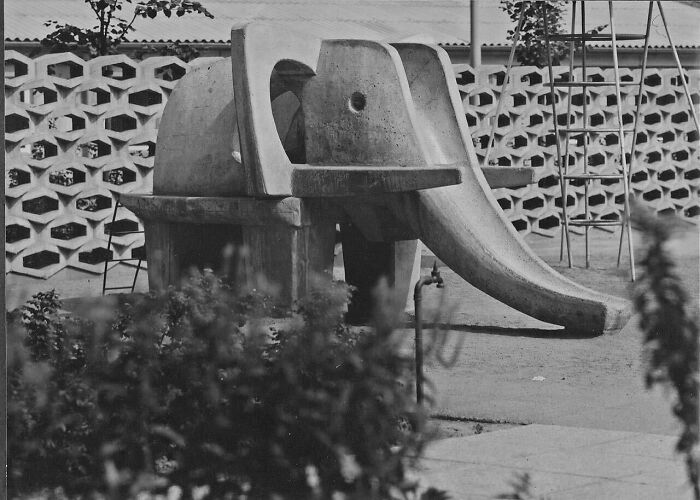

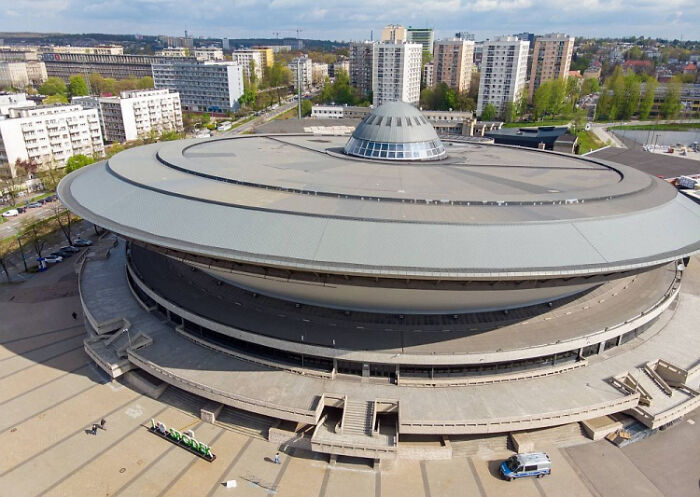
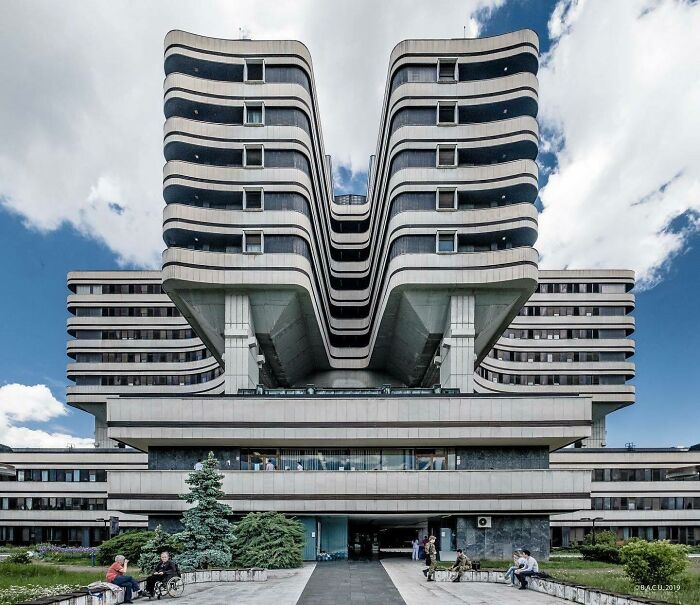
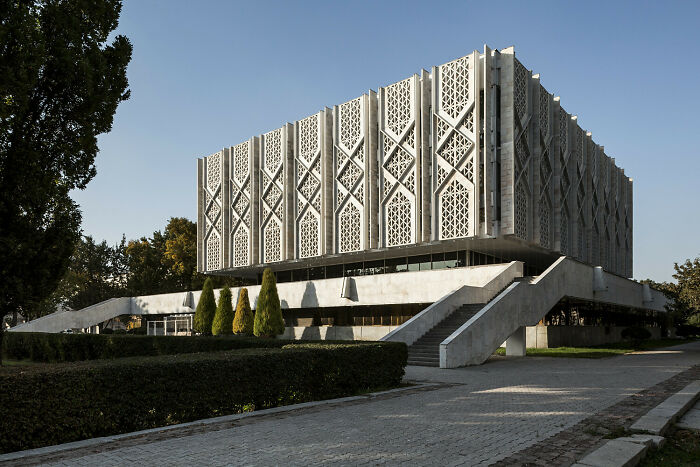
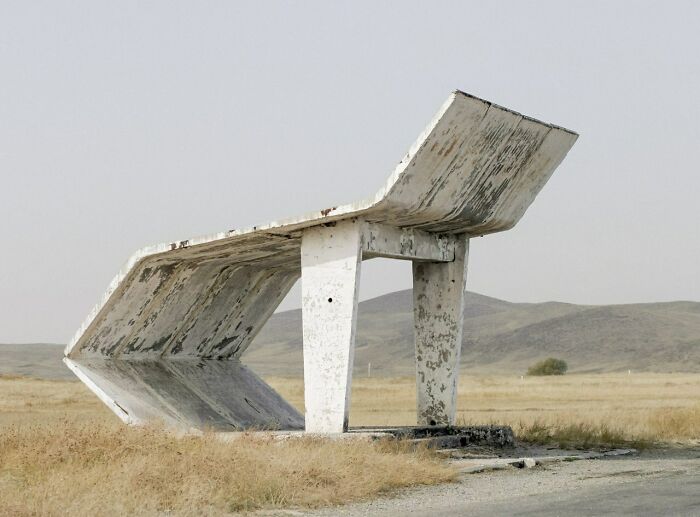
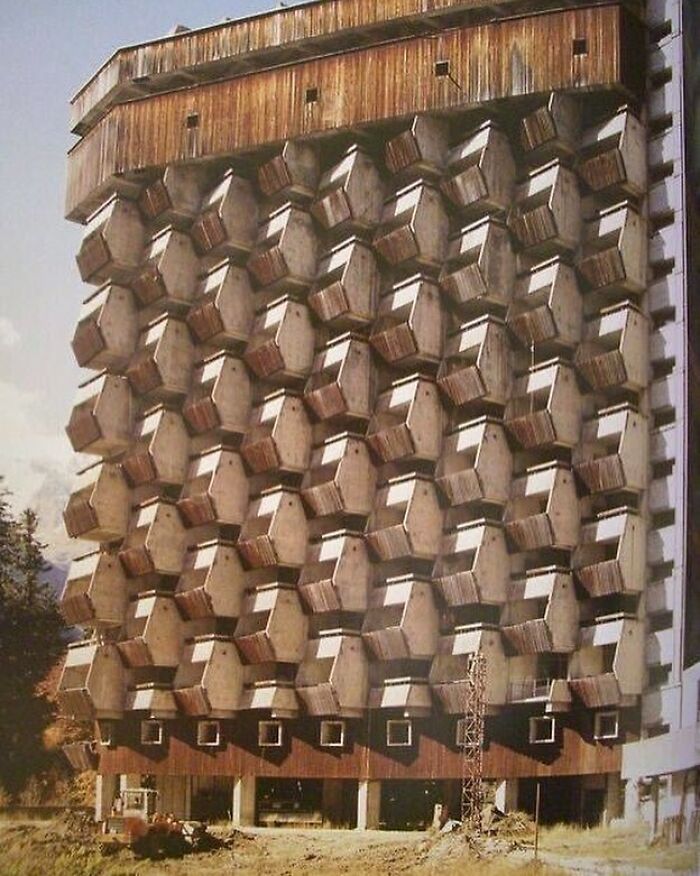
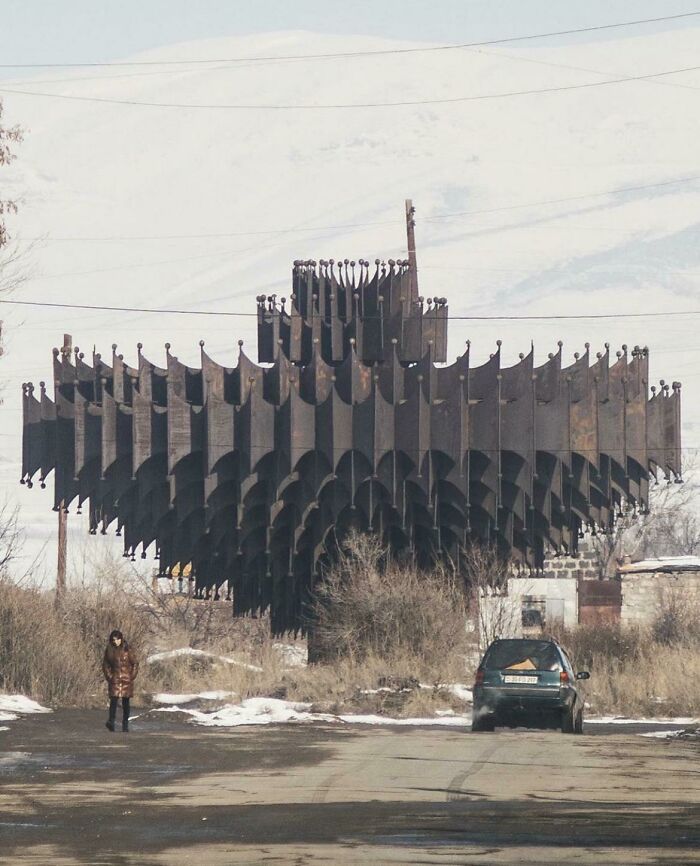
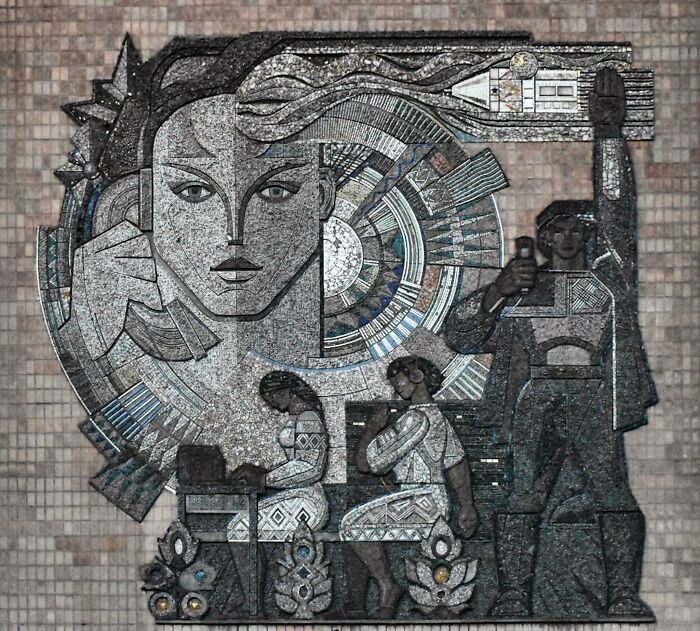
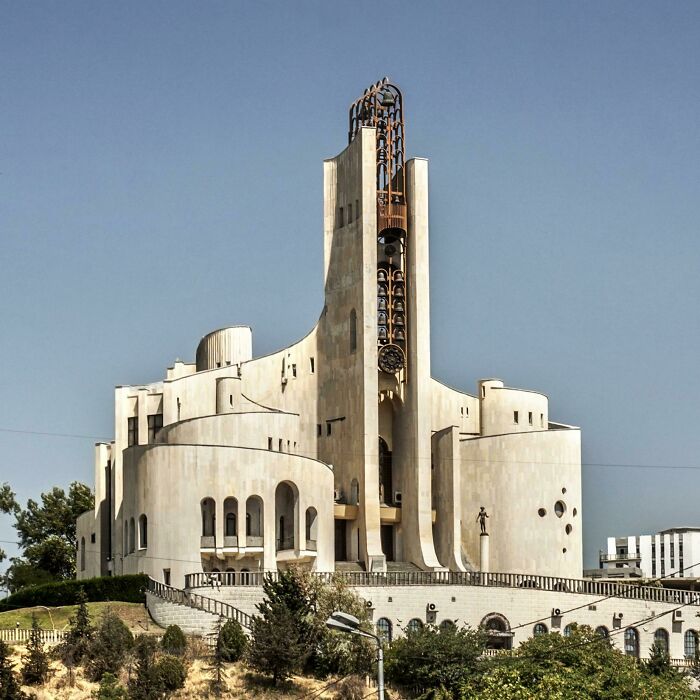
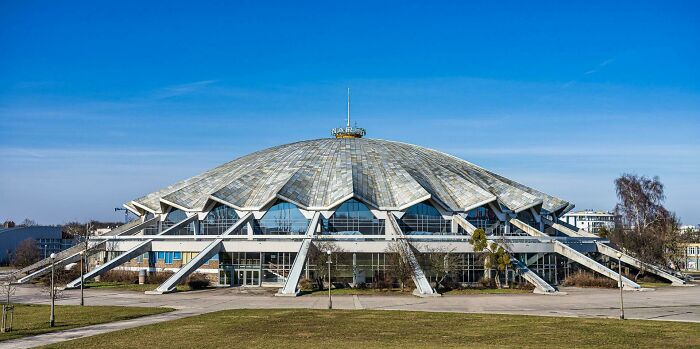
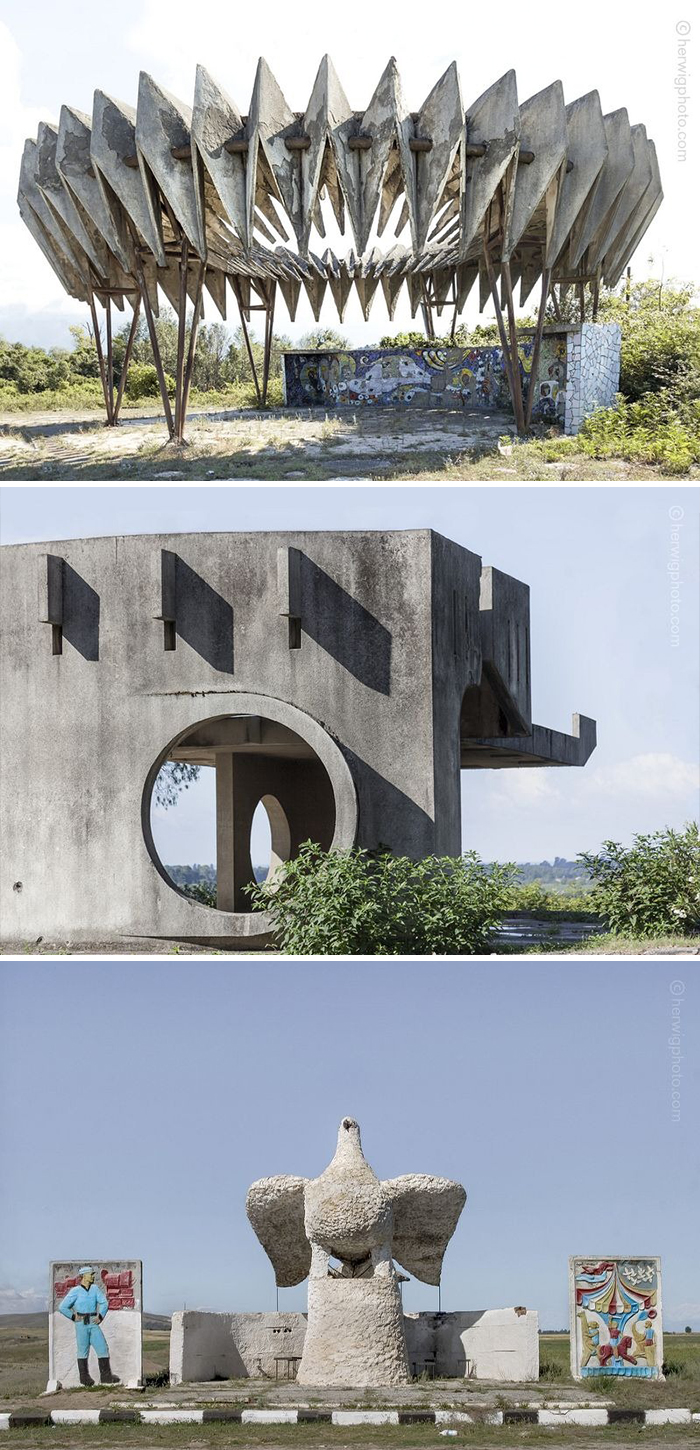
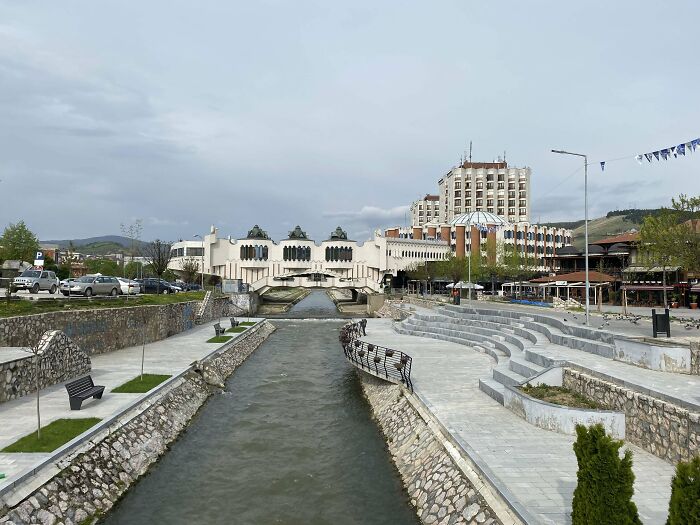
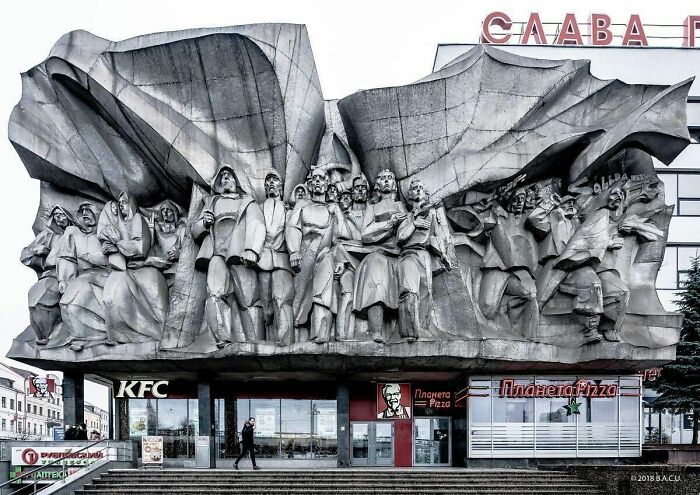
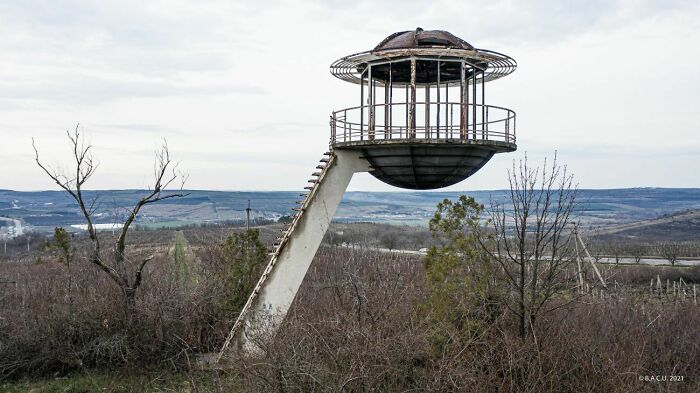
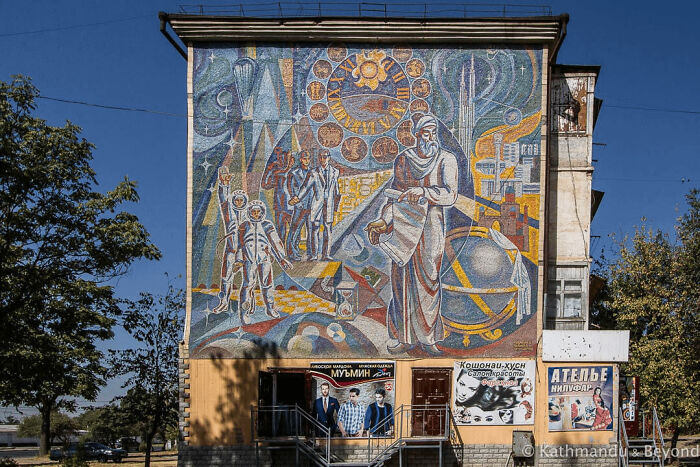
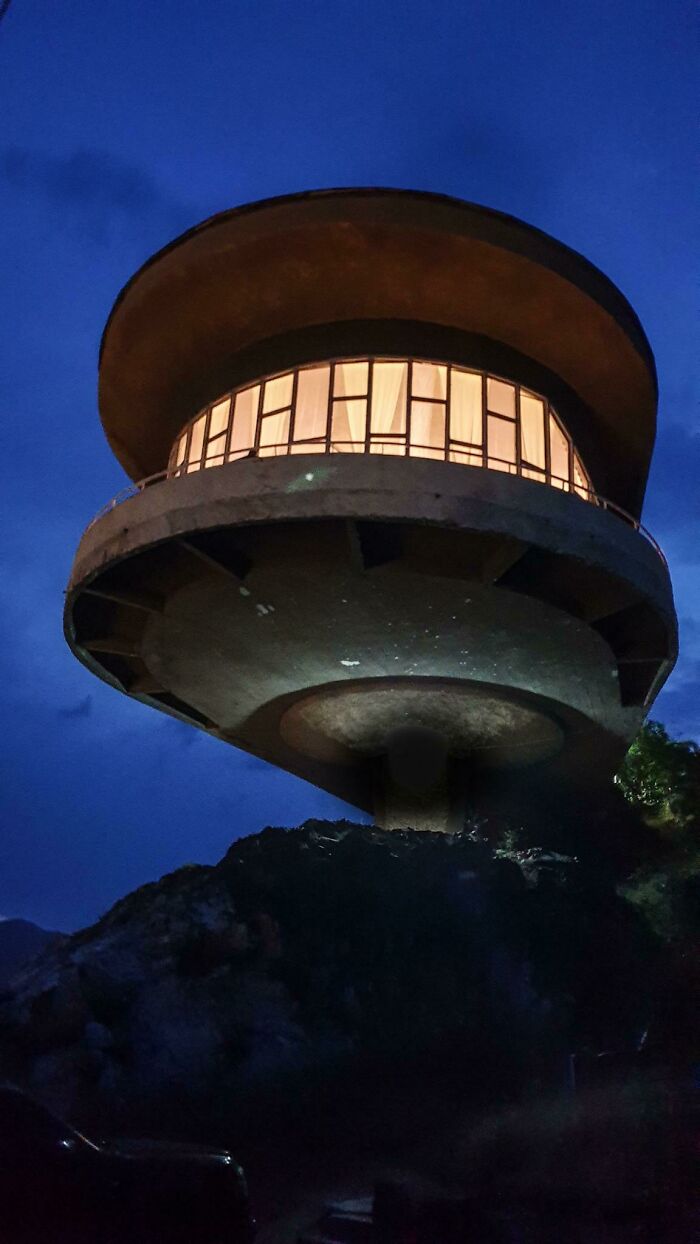
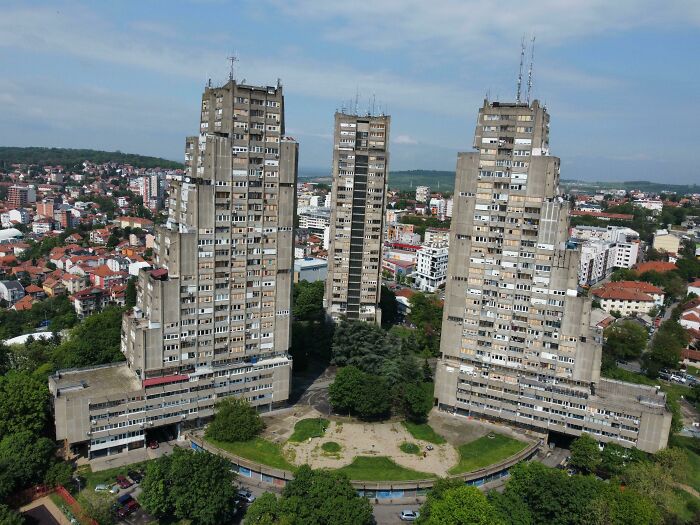
![Museum Of Contemporary Art, Belgrade [oc] Museum Of Contemporary Art, Belgrade [oc]](https://www.boredpanda.com/blog/wp-content/uploads/2023/05/646daad85ae9f_czztufflnhya1__700.jpg)
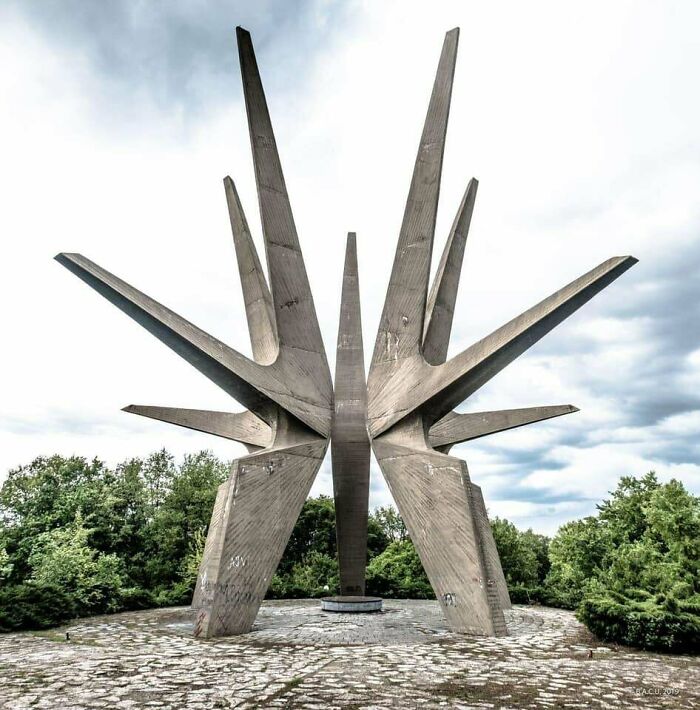
![Lake Sevan Viewing Platform [oc] Lake Sevan Viewing Platform [oc]](https://www.boredpanda.com/blog/wp-content/uploads/2023/05/646daccf65f41_3z3q7hnl7xj71__700.jpg)
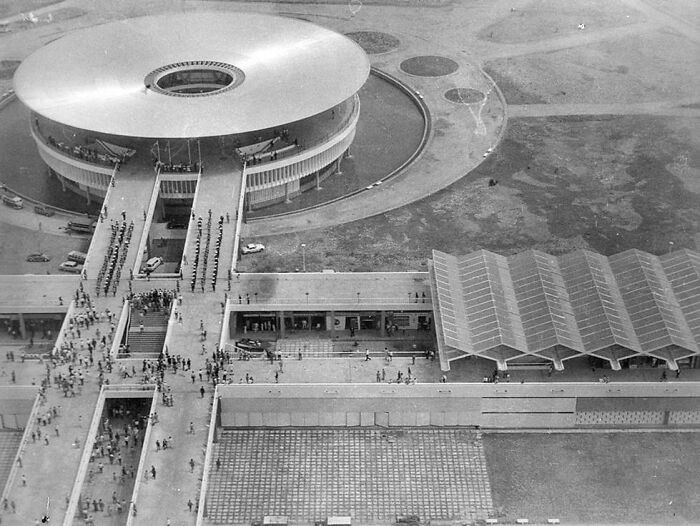
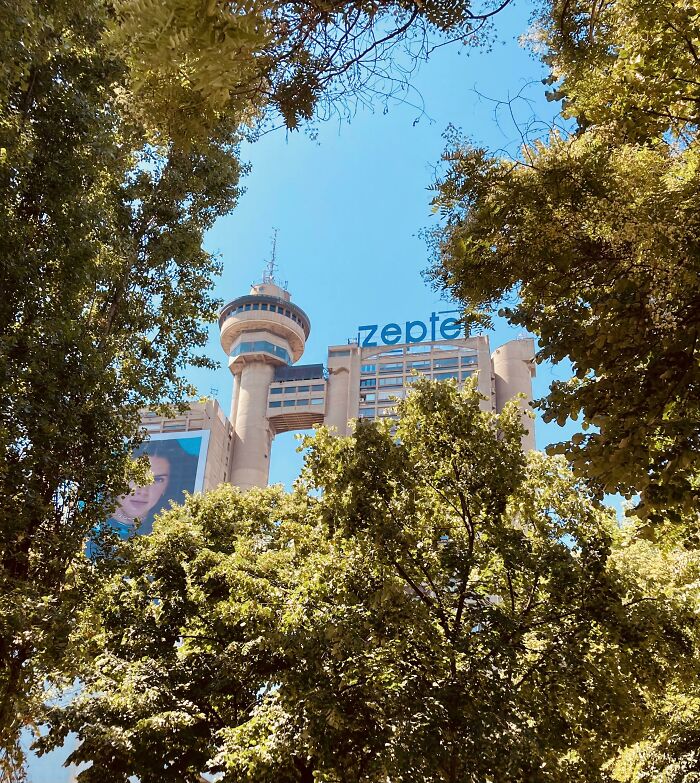
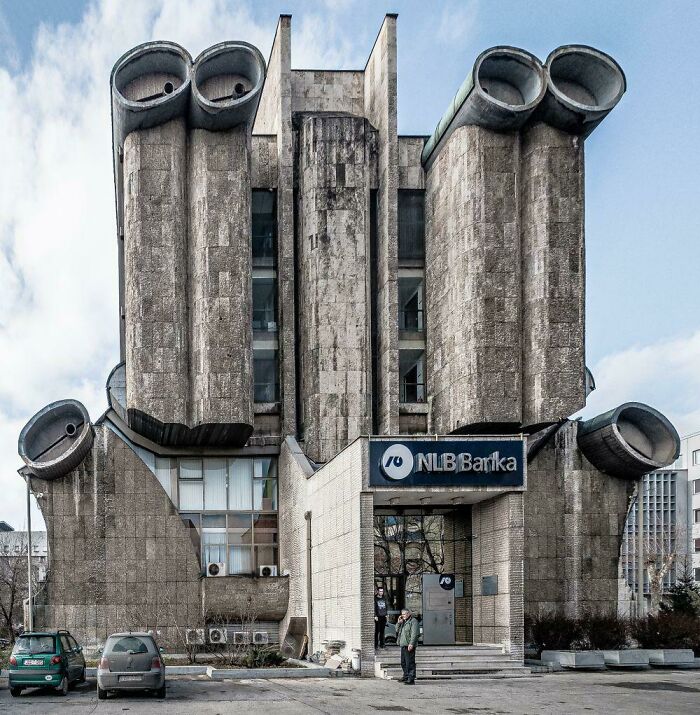
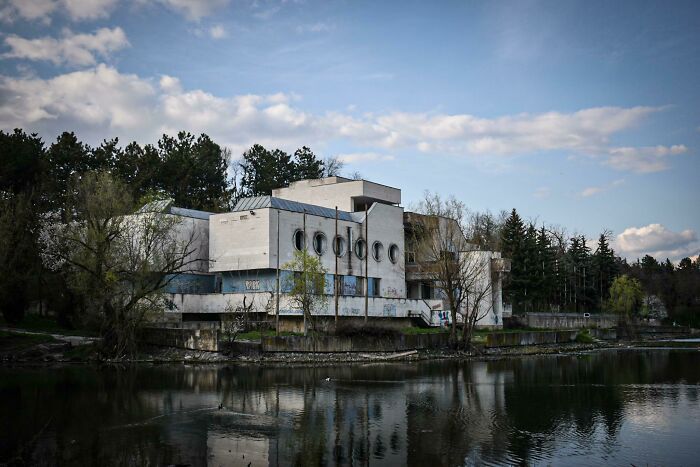
![[oc] Fontana Complex, New Belgrade, Serbia. Built In 1968, Architect Uroš Martinović [oc] Fontana Complex, New Belgrade, Serbia. Built In 1968, Architect Uroš Martinović](https://www.boredpanda.com/blog/wp-content/uploads/2023/05/646dac1ccb027_nqvnjo88fova1__700.jpg)
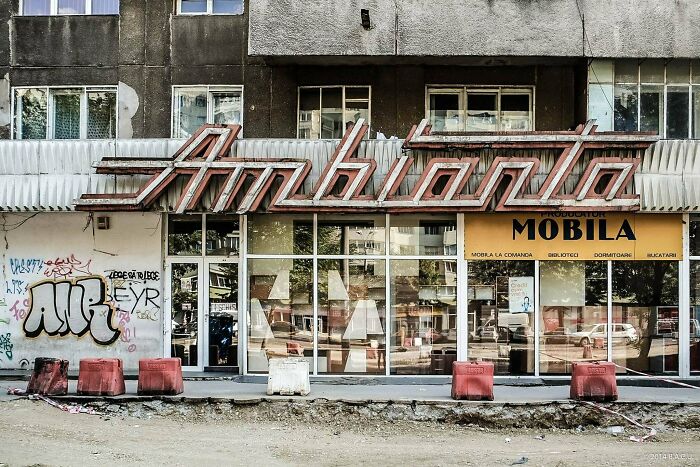
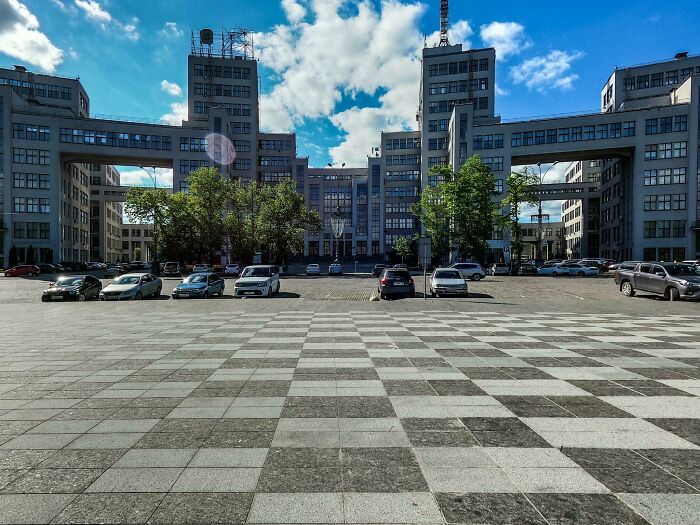
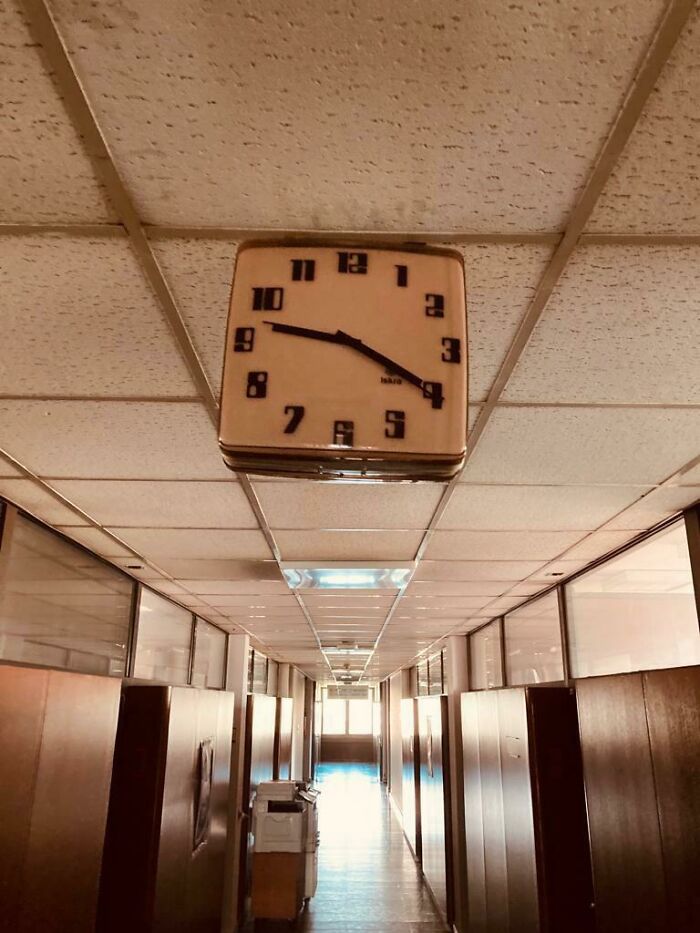
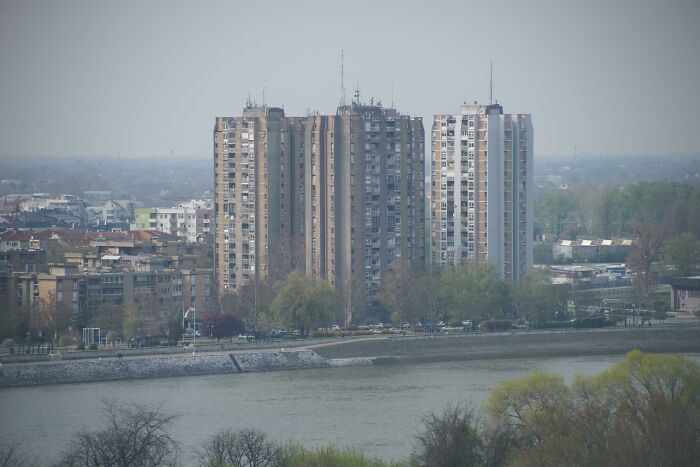
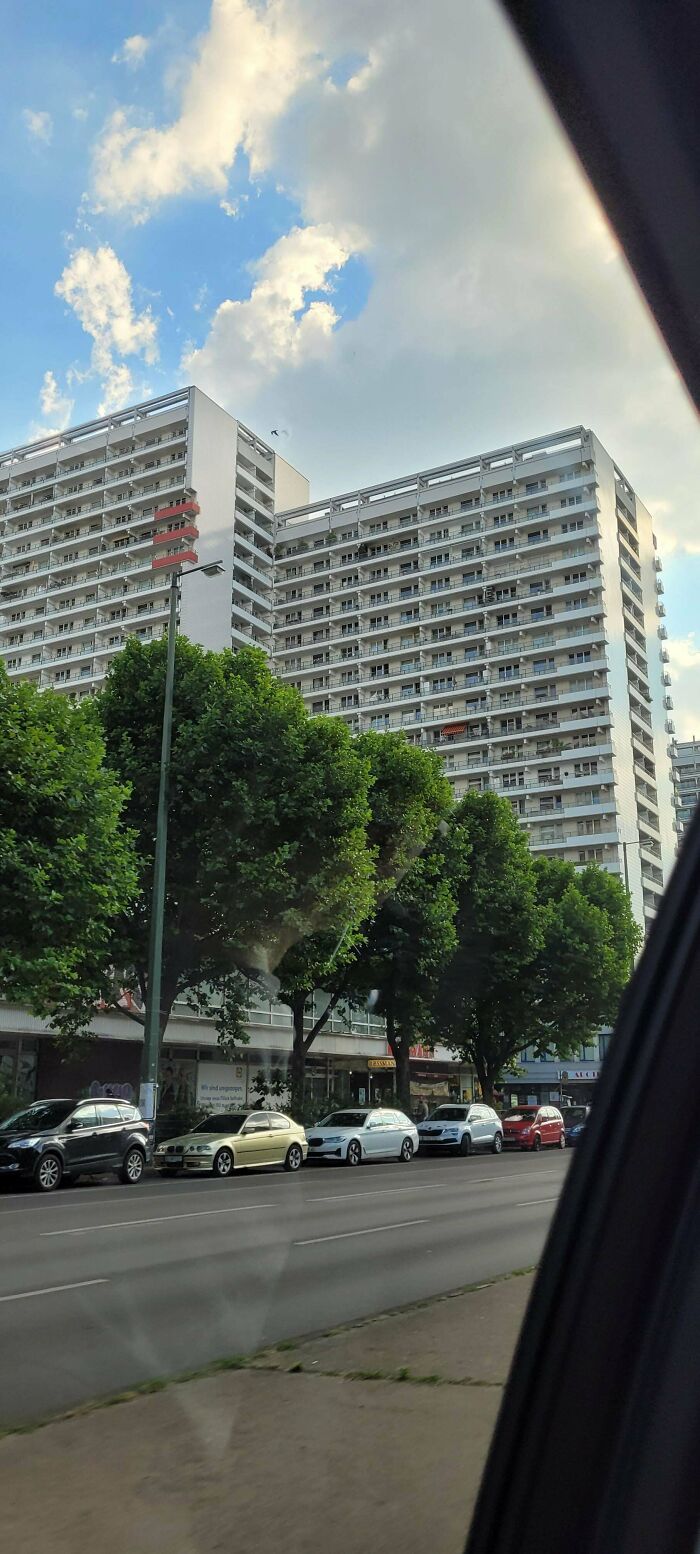
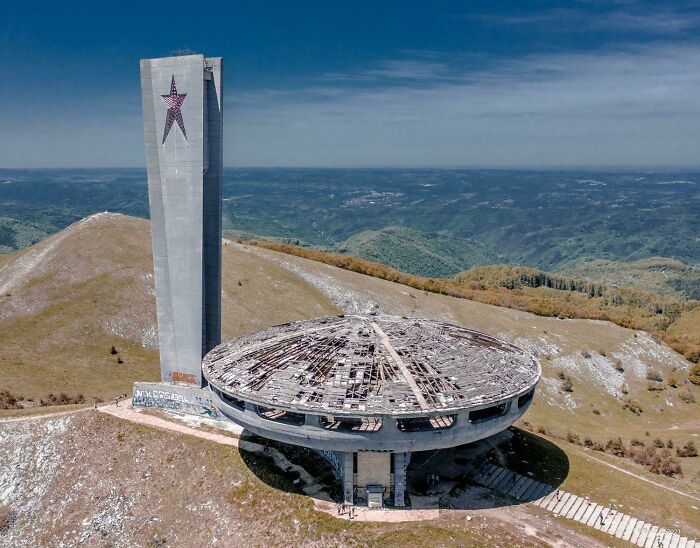
!["Karaburma" Dorm, Belgrade, Serbia [oc] "Karaburma" Dorm, Belgrade, Serbia [oc]](https://www.boredpanda.com/blog/wp-content/uploads/2023/05/646dabd22ec35_q9pq2n818kua1__700.jpg)
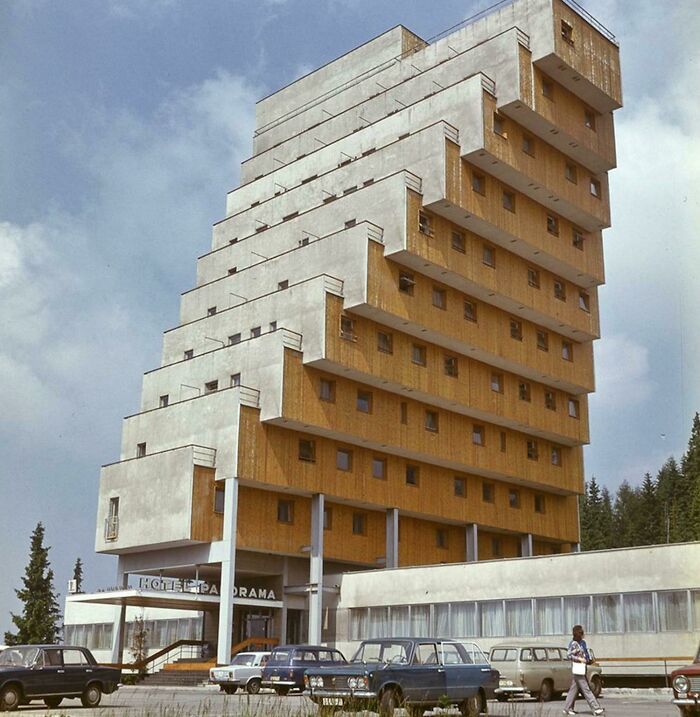
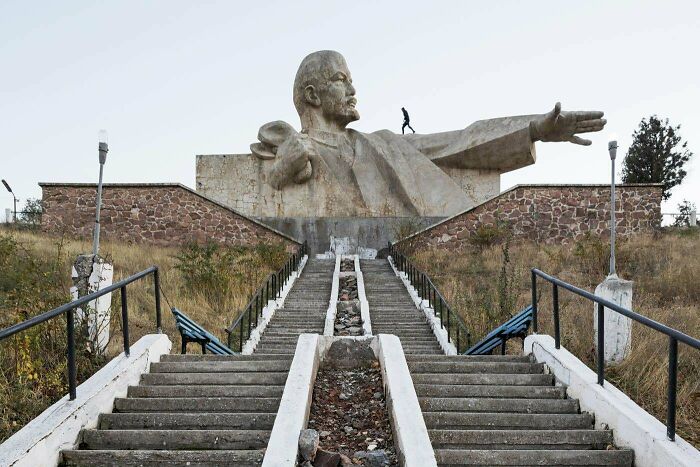
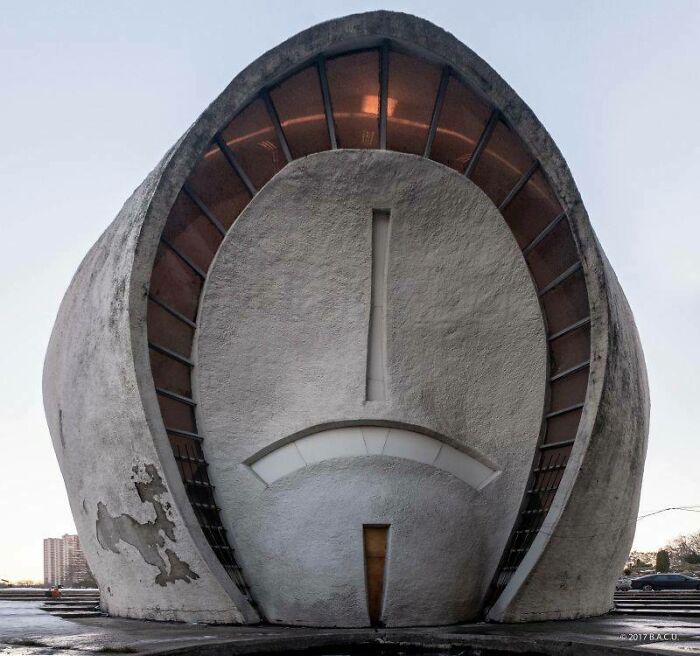
![Town Square View Towards "Zlatibor Hotel" In Užice, Serbia [oc] Town Square View Towards "Zlatibor Hotel" In Užice, Serbia [oc]](https://www.boredpanda.com/blog/wp-content/uploads/2023/05/646dac1019eb5_ods9sysw0sta1__700.jpg)
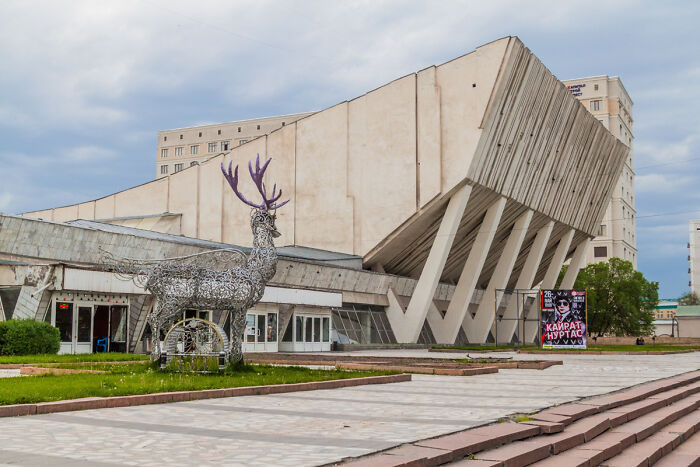
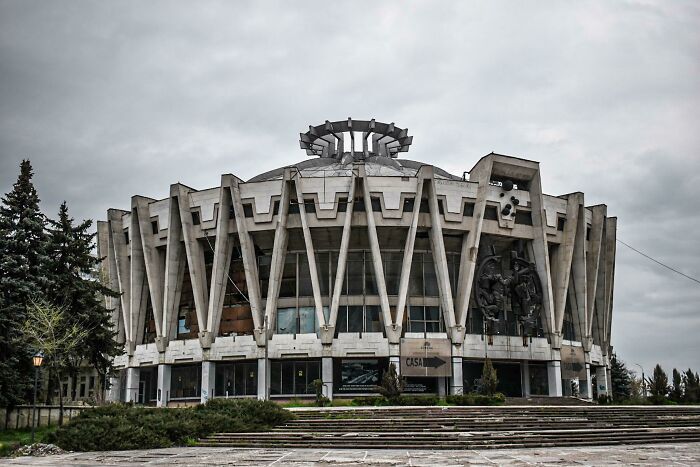
![Palace Of Rituals, Tbilisi [oc] Palace Of Rituals, Tbilisi [oc]](https://www.boredpanda.com/blog/wp-content/uploads/2023/05/646db28bcf7d2_ts88i2zqjin71__700.jpg)
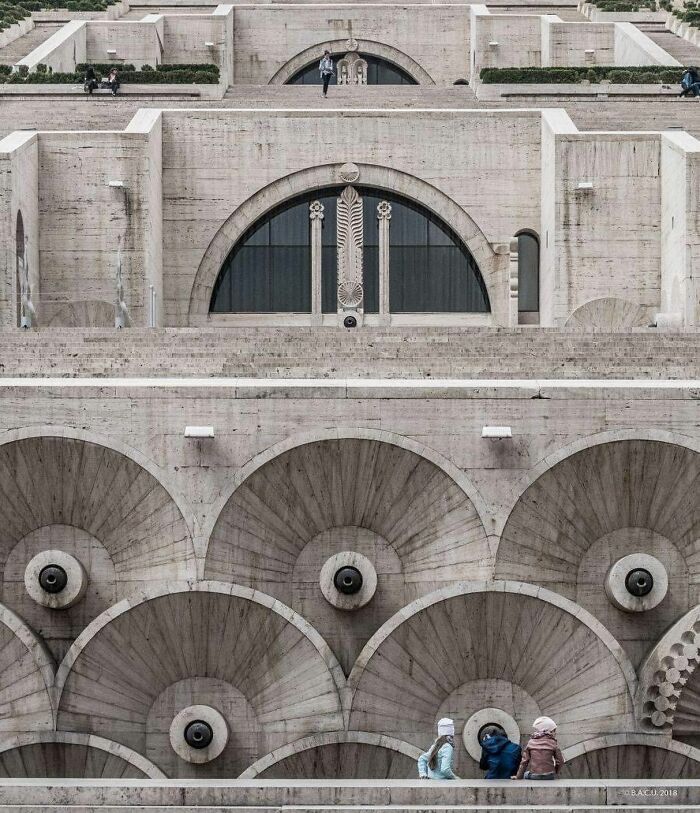
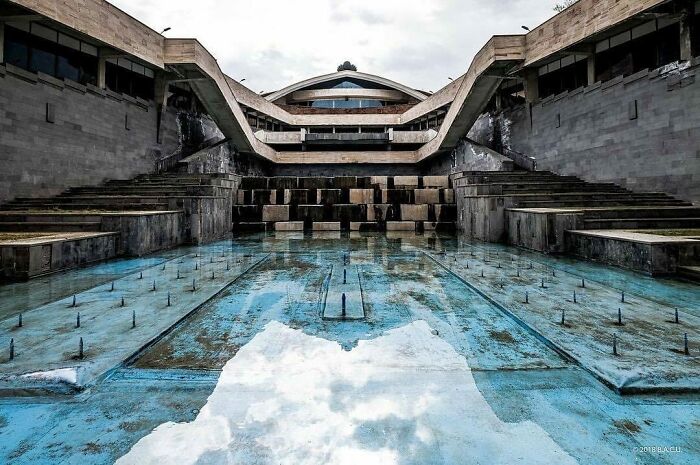
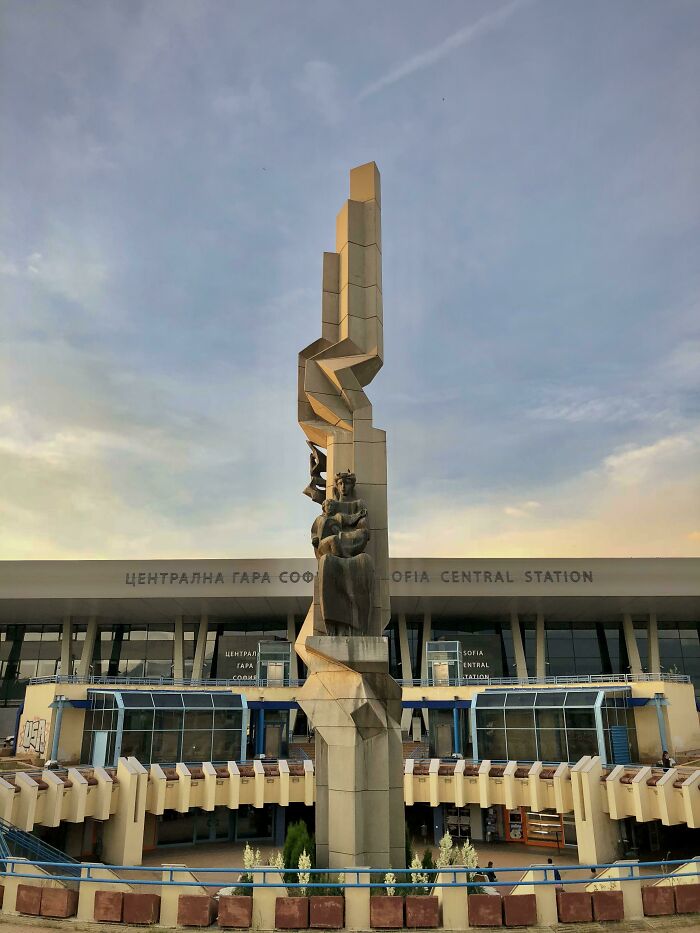
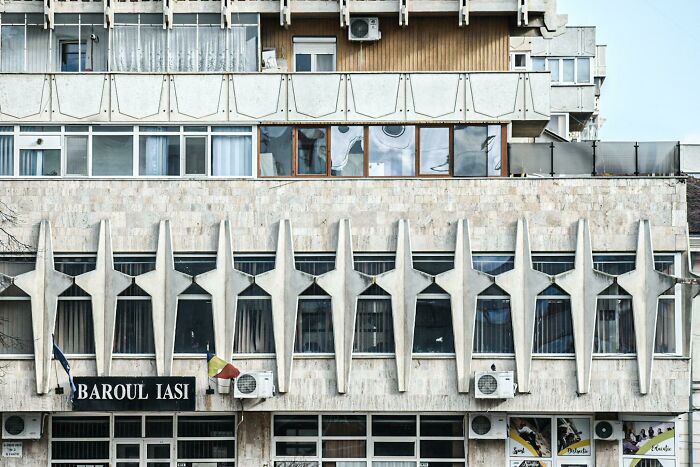
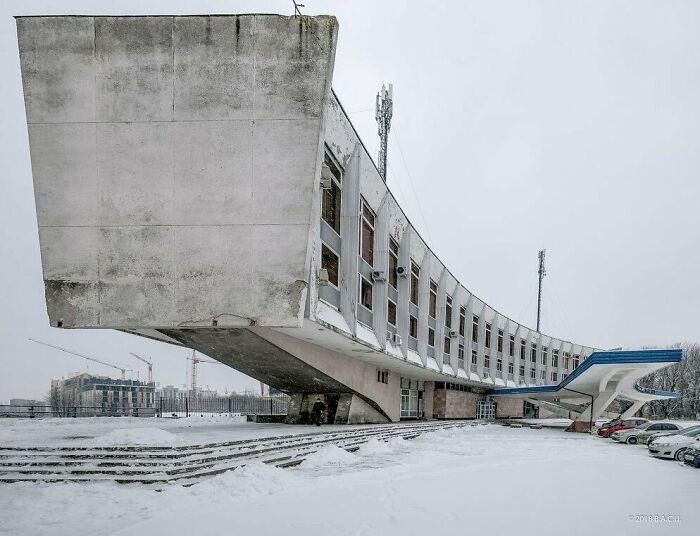
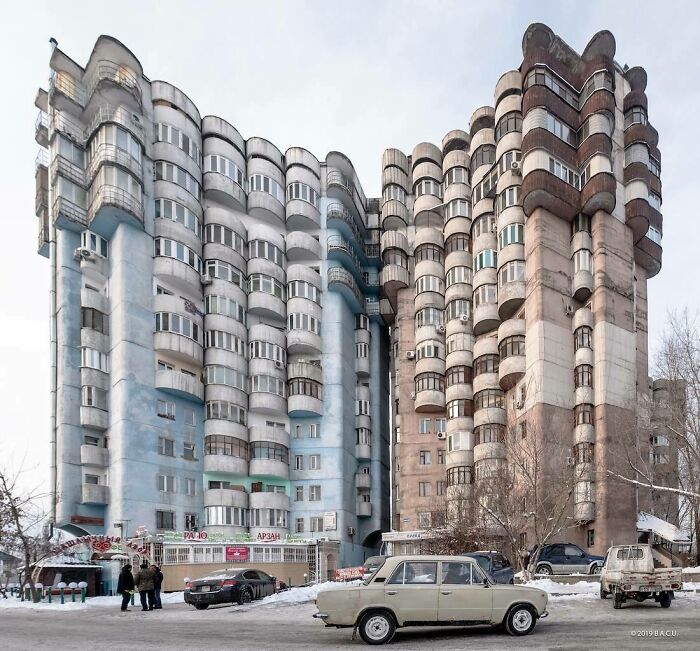
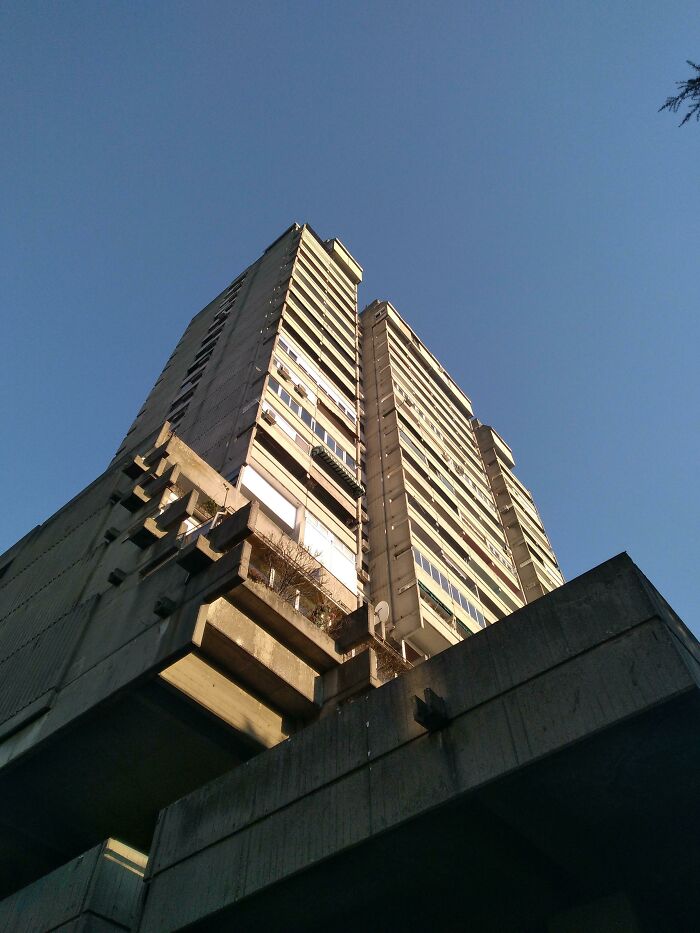
![[oc] Entrance Group With Concrete Decor Elements In New Belgrade, Serbia [oc] Entrance Group With Concrete Decor Elements In New Belgrade, Serbia](https://www.boredpanda.com/blog/wp-content/uploads/2023/05/646dac653ae7d_p7p8unvfufua1__700.jpg)
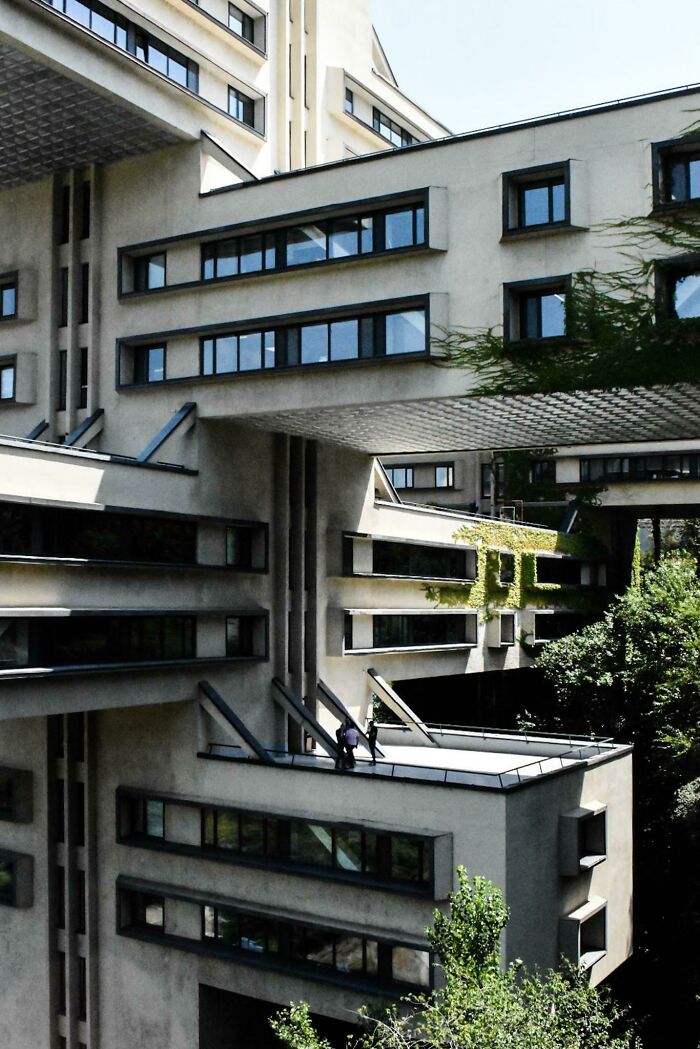





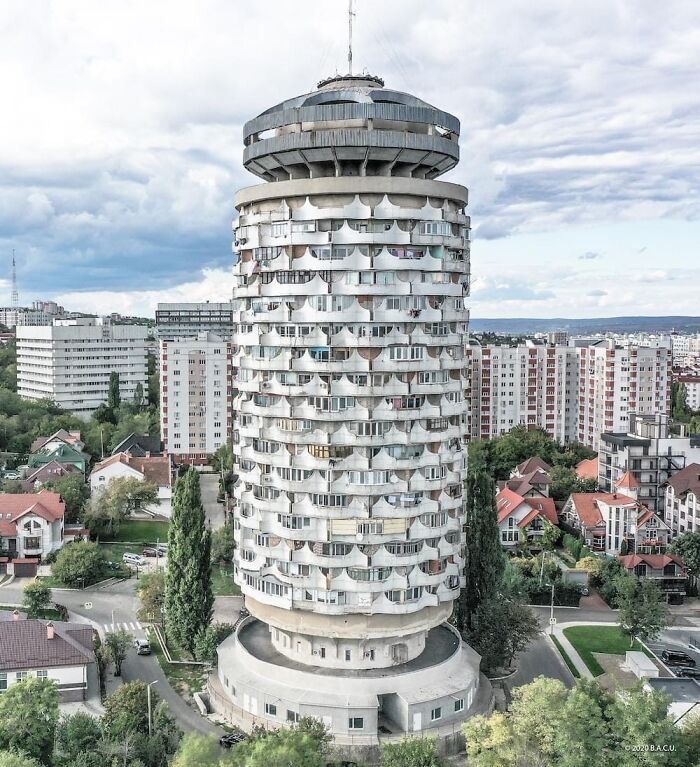

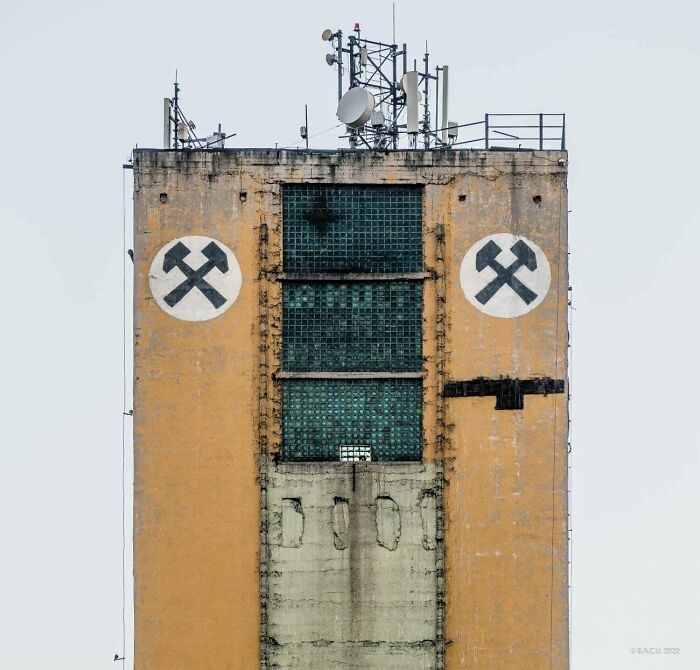
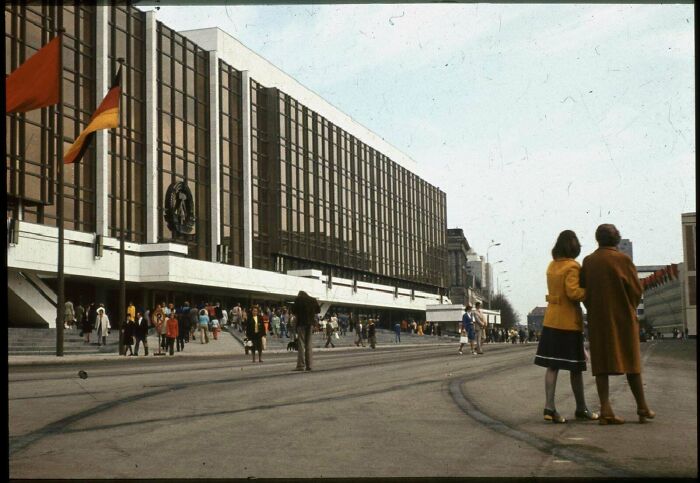




![Residential Building In Tbilisi [oc] Residential Building In Tbilisi [oc]](https://www.boredpanda.com/blog/wp-content/uploads/2023/05/646db01544033_01f6j68zsgi71__700.jpg)
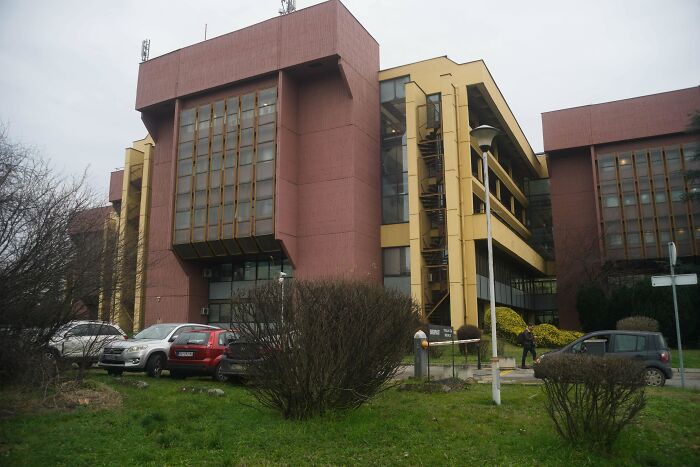
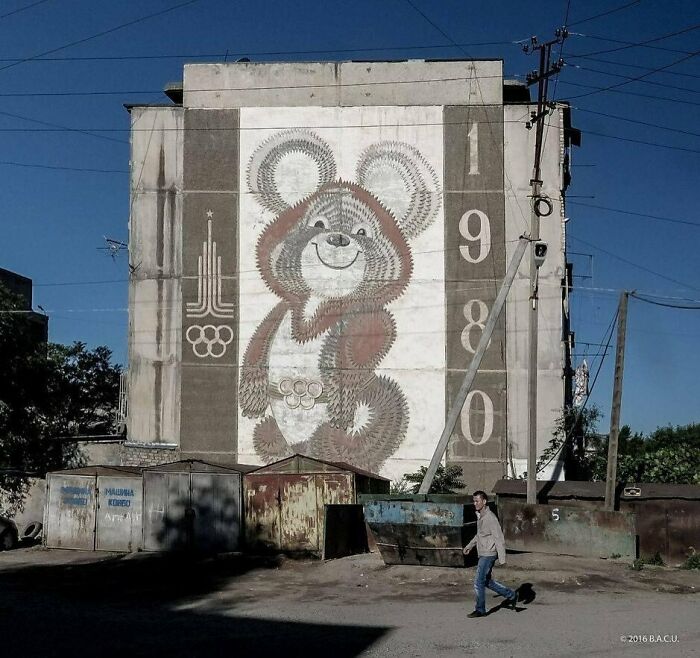
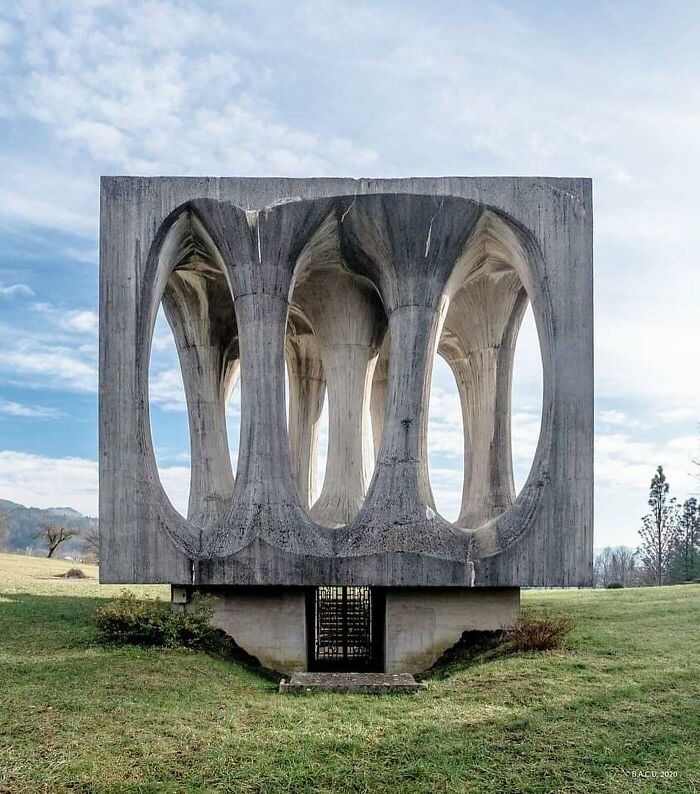




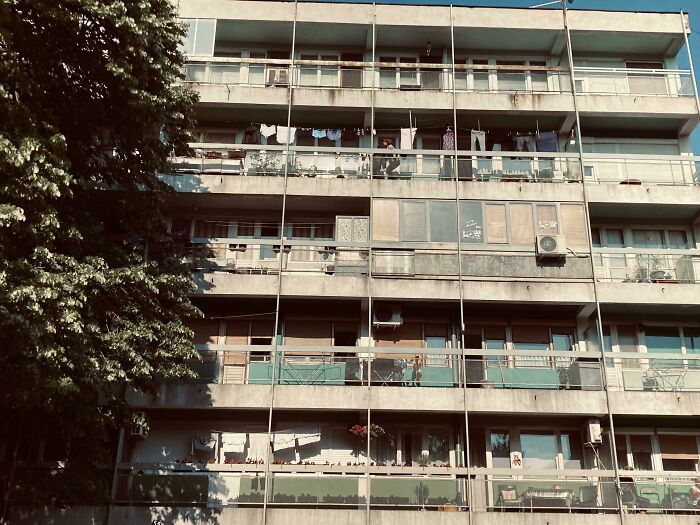
![Detail Of The Skyscraper And The Stormy Sky In Novi Sad [oc] Detail Of The Skyscraper And The Stormy Sky In Novi Sad [oc]](https://www.boredpanda.com/blog/wp-content/uploads/2023/05/646dac9850a5c_6e775zxjah0b1__700.jpg)
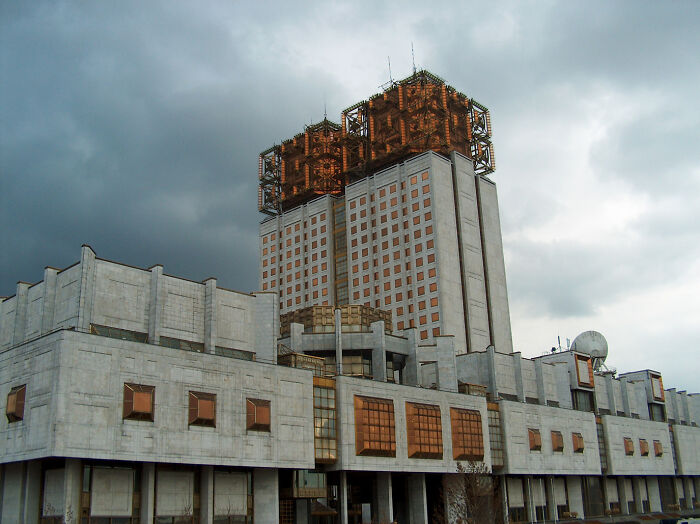
![[oc] Building In New Belgrade, Serbia [oc] Building In New Belgrade, Serbia](https://www.boredpanda.com/blog/wp-content/uploads/2023/05/646dacf5da163_uaxewpfhxmsa1__700.jpg)




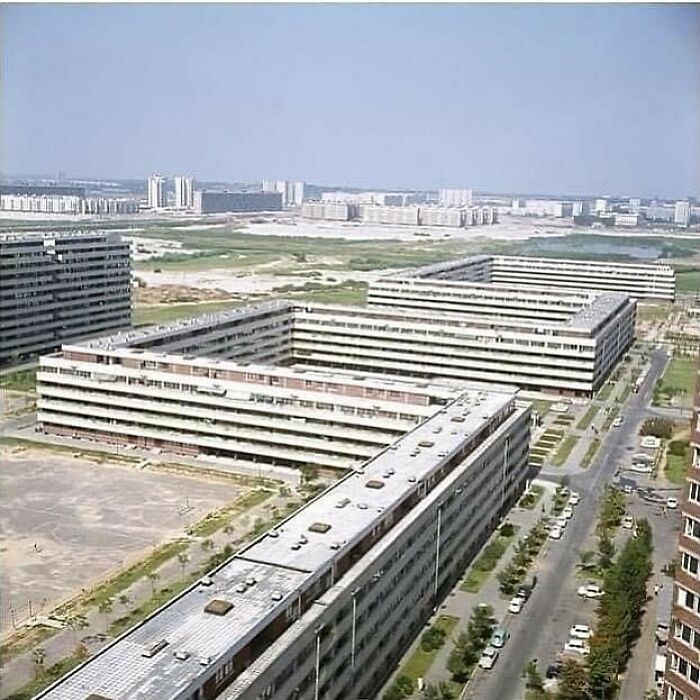
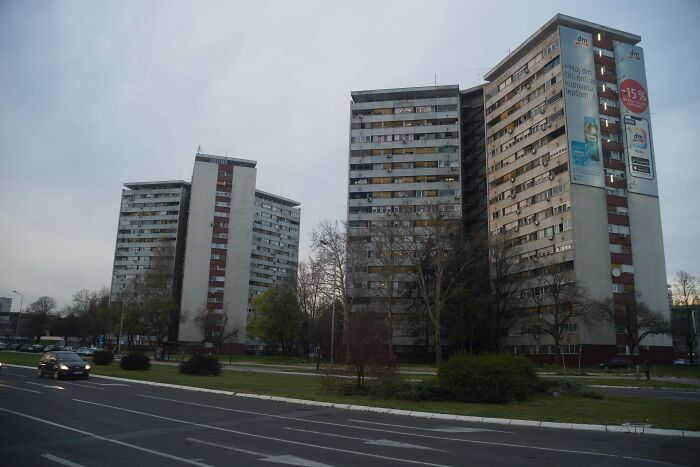
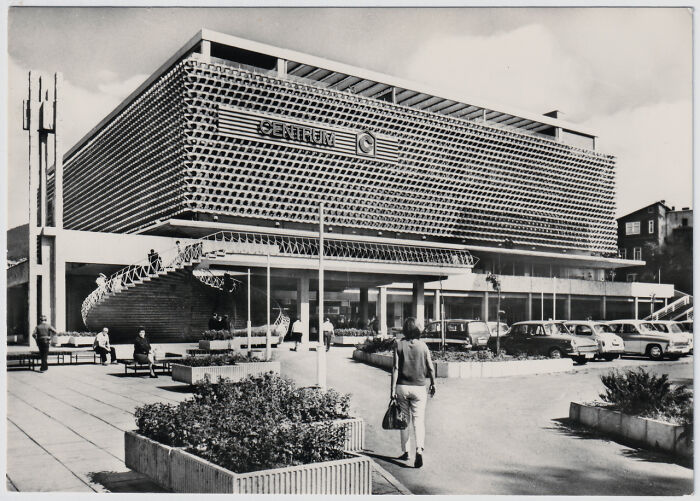
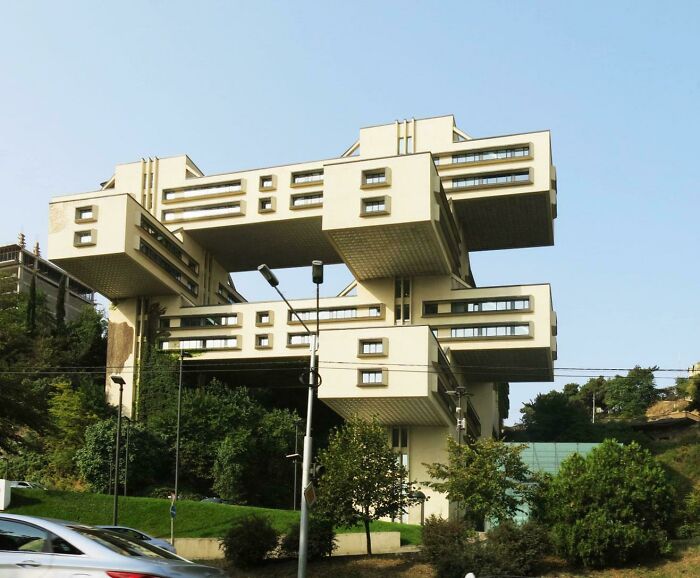




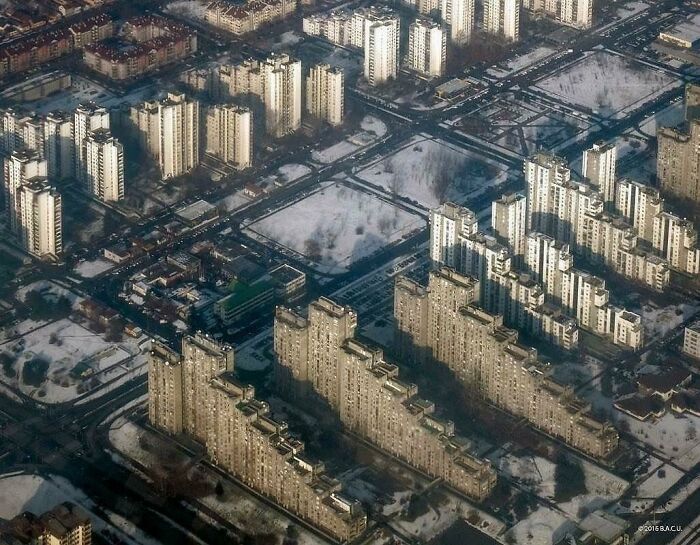
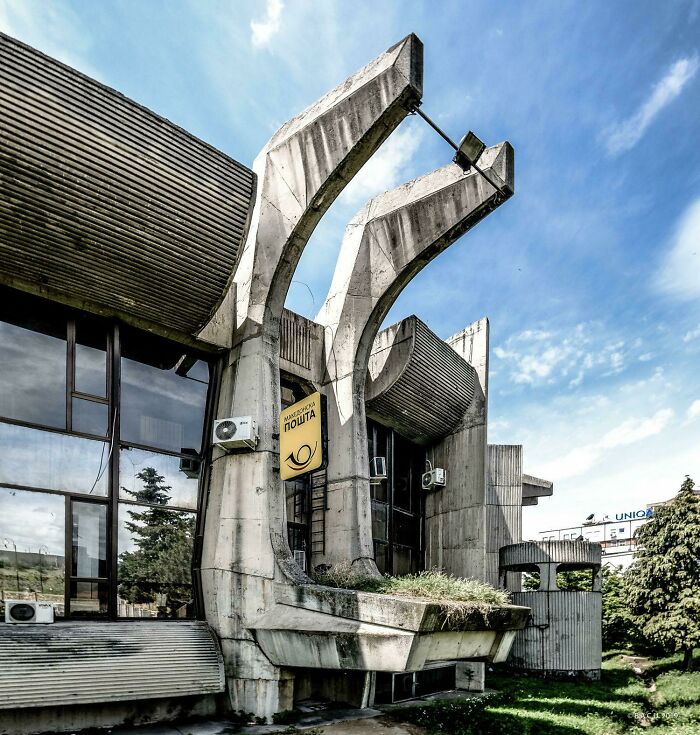
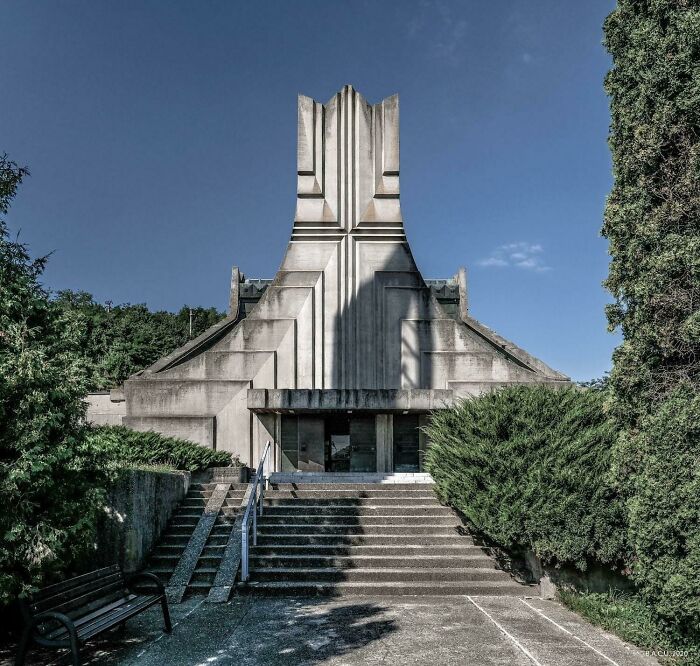
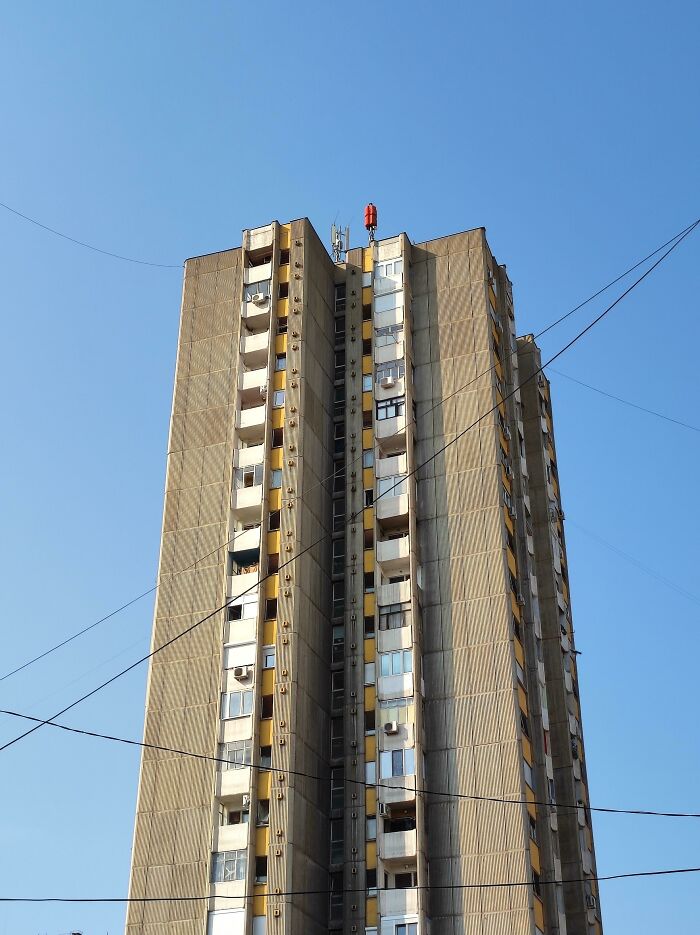




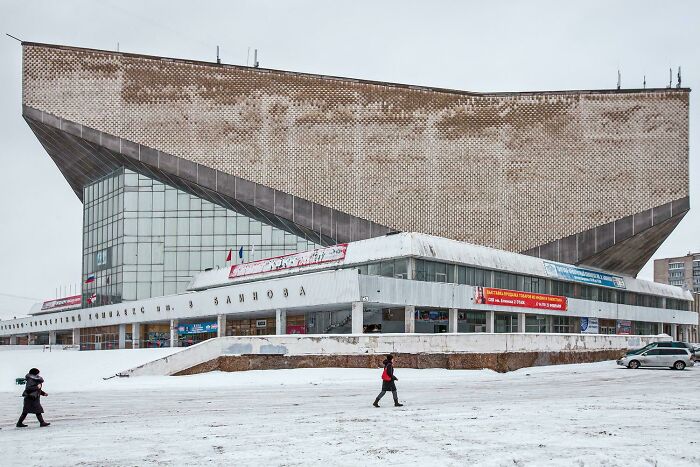
![[oc] The Stunning Hotel Roman: Baile Herculane, Romania. Built 1974-76. Architect Salumita And A. Mureșan. Hotel/Sanatorium, Still In Use. Built Over A Roman Baths From 107ad [oc] The Stunning Hotel Roman: Baile Herculane, Romania. Built 1974-76. Architect Salumita And A. Mureșan. Hotel/Sanatorium, Still In Use. Built Over A Roman Baths From 107ad](https://www.boredpanda.com/blog/wp-content/uploads/2023/05/646dafd79ceb8_6gcx09psqd991__700.jpg)
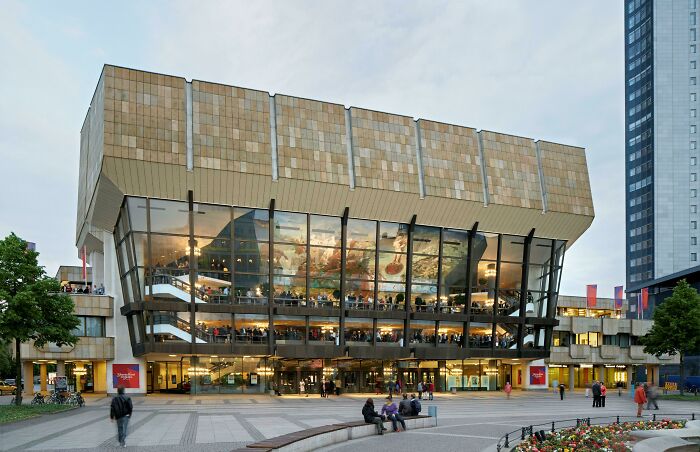
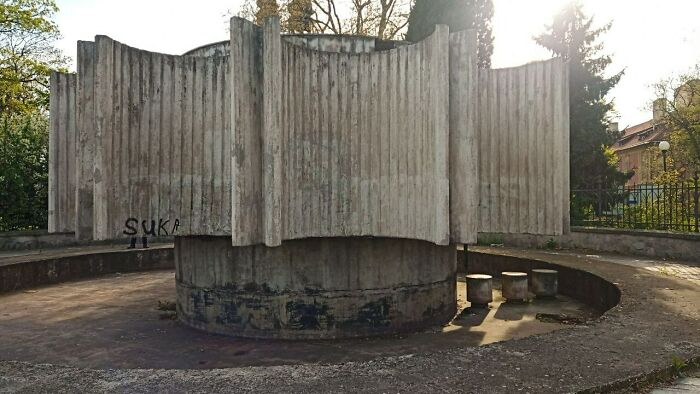




![Mykolajiv Train Station, 2049 [oc] Mykolajiv Train Station, 2049 [oc]](https://www.boredpanda.com/blog/wp-content/uploads/2023/05/646db0ad6c30c_kmkoxzjhh7771__700.jpg)
![[oc] Theater In New Belgrade, Serbia [oc] Theater In New Belgrade, Serbia](https://www.boredpanda.com/blog/wp-content/uploads/2023/05/646db0ce5c9da_dulmo5b3tfsa1__700.jpg)
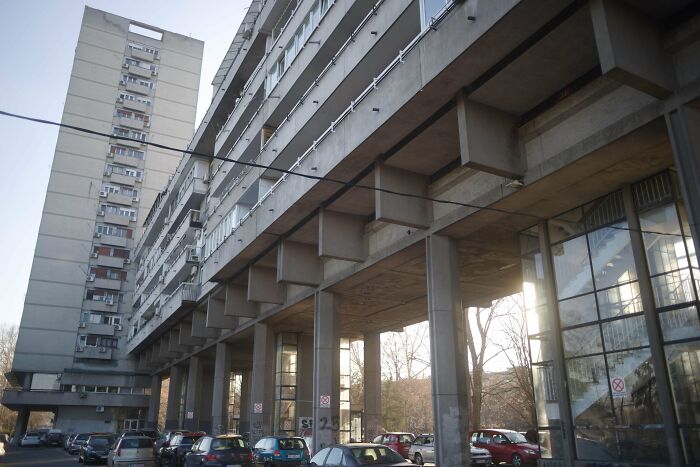
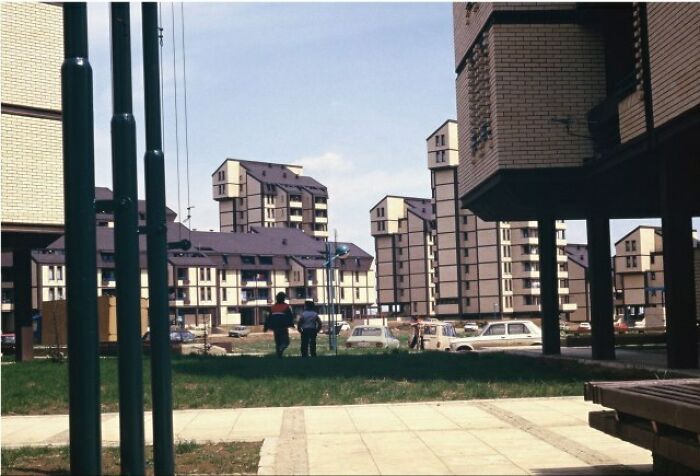
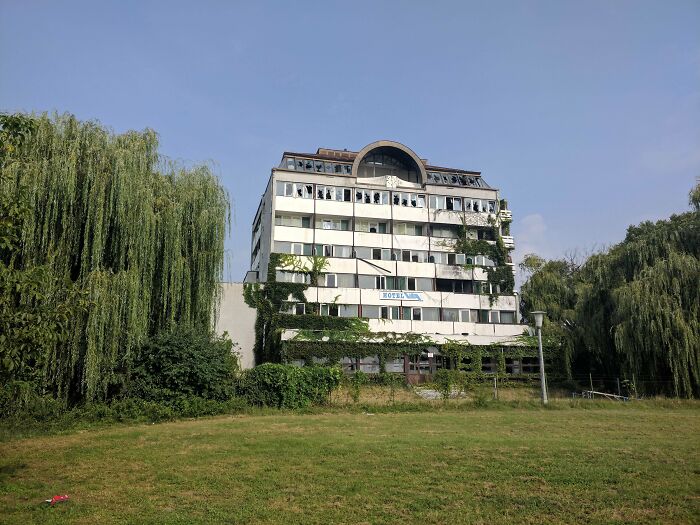
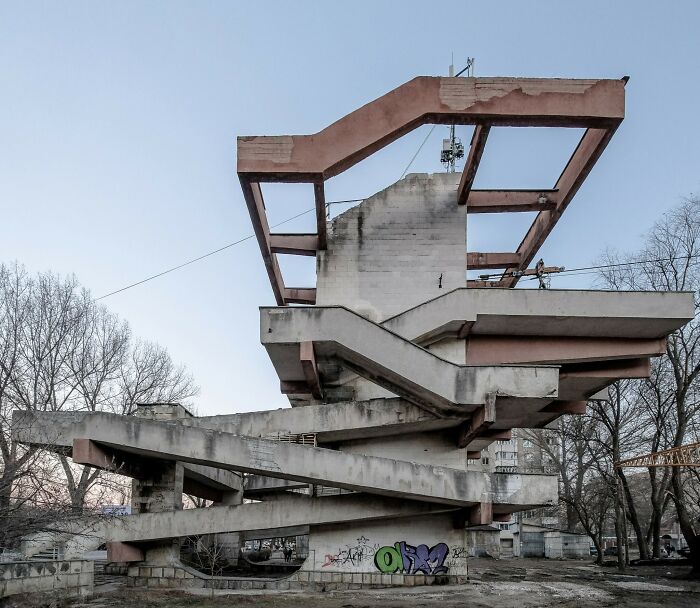
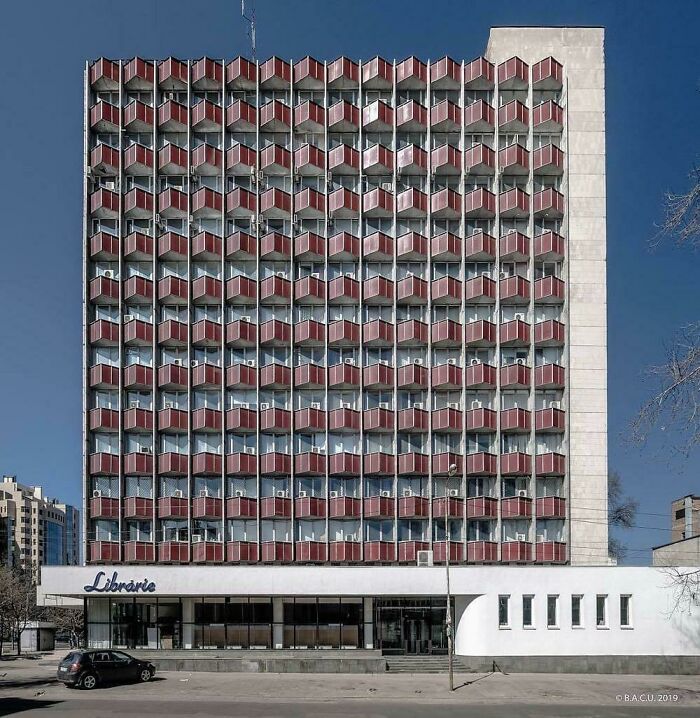
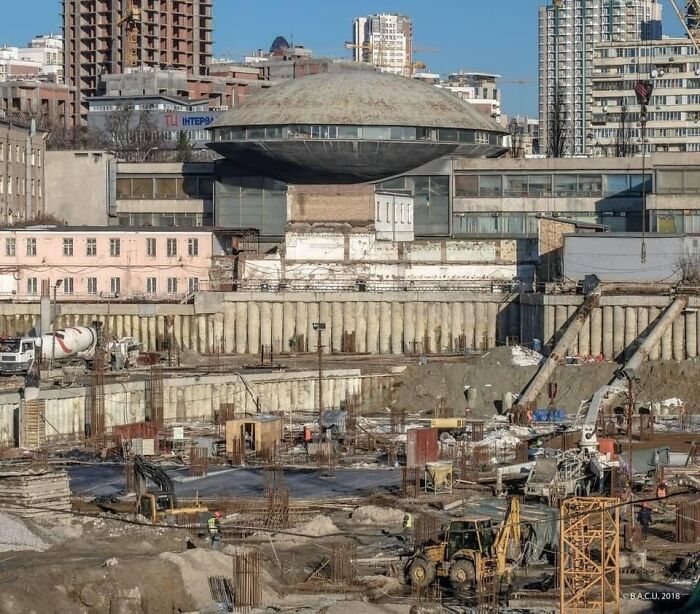
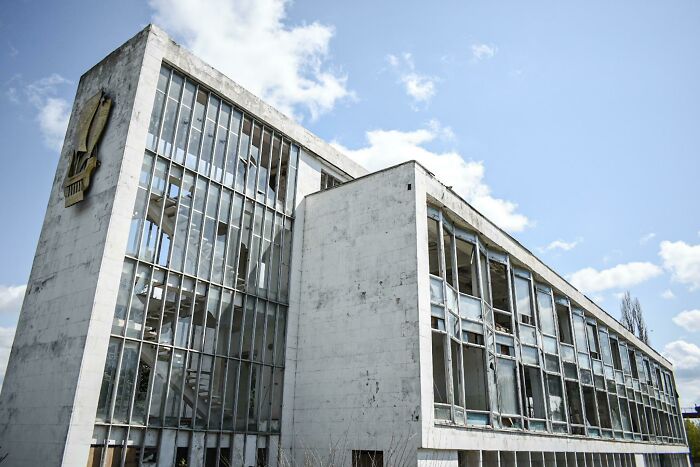
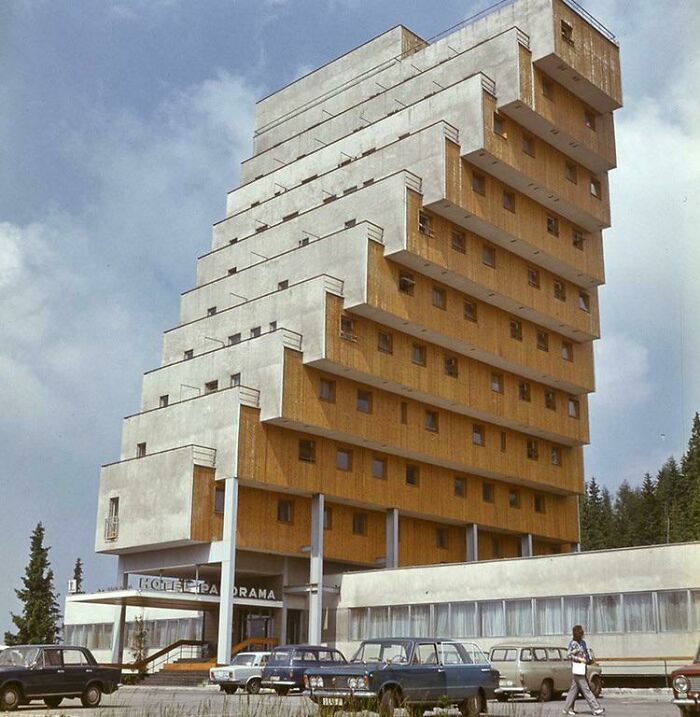
![[oc] Random Facade In Suceava, Romania [oc] Random Facade In Suceava, Romania](https://www.boredpanda.com/blog/wp-content/uploads/2023/05/646db1082106d_8d1j62tg2loa1__700.jpg)
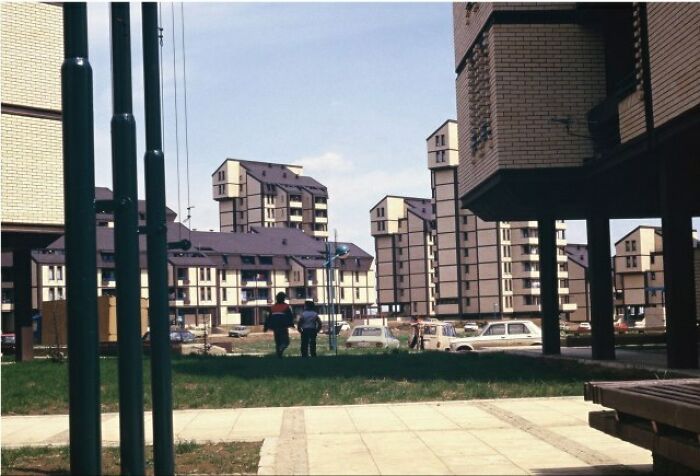
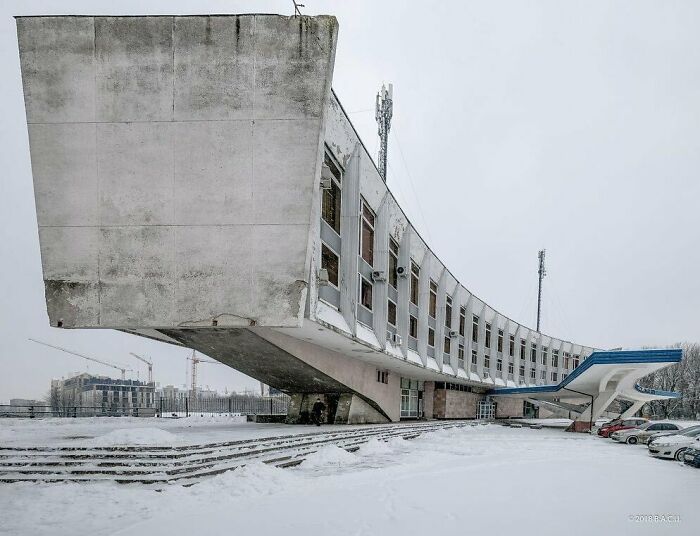
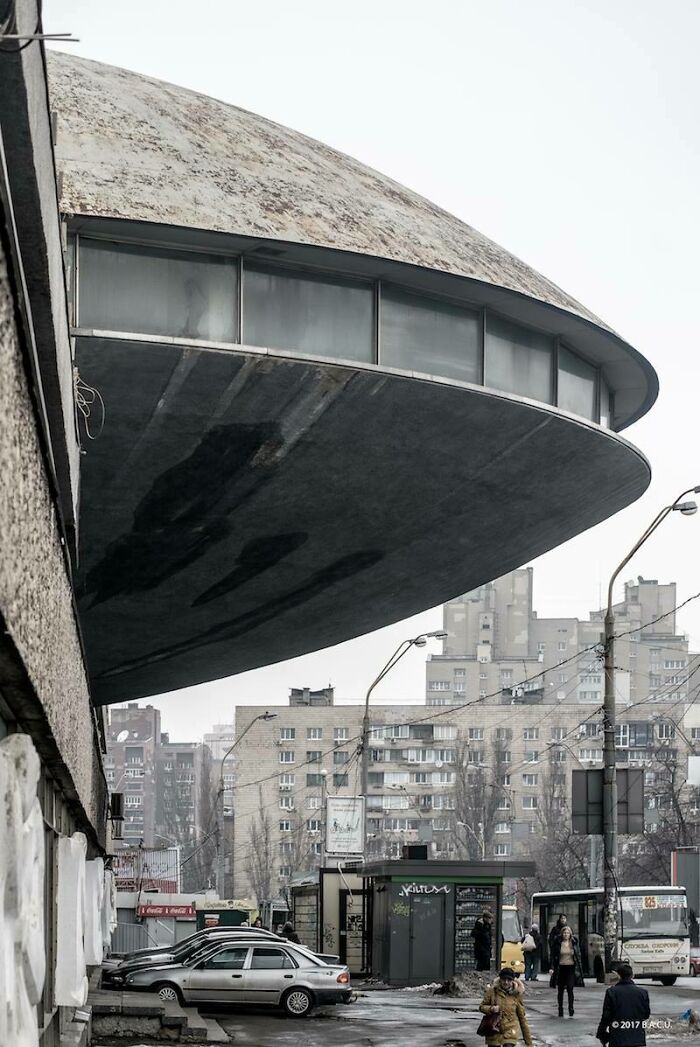
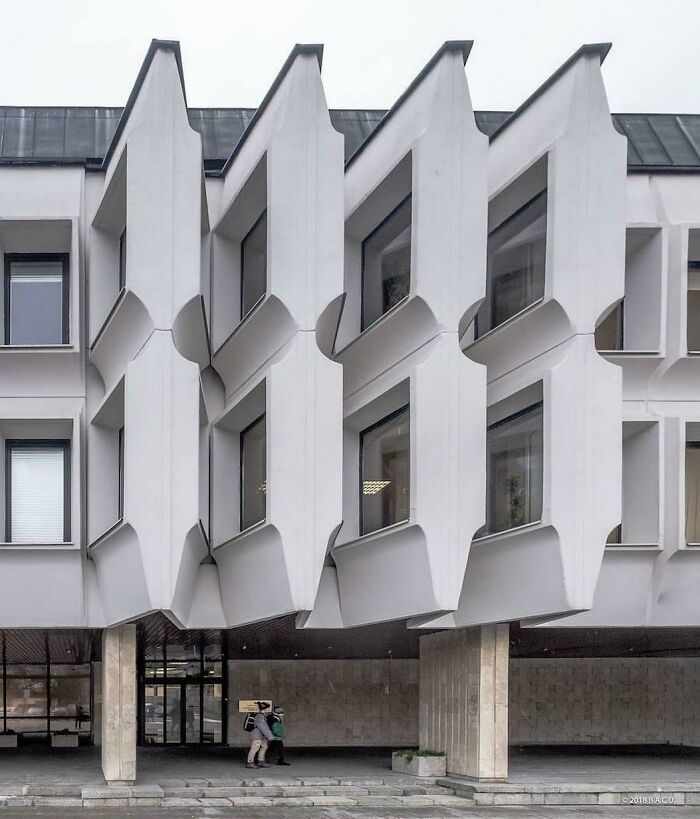
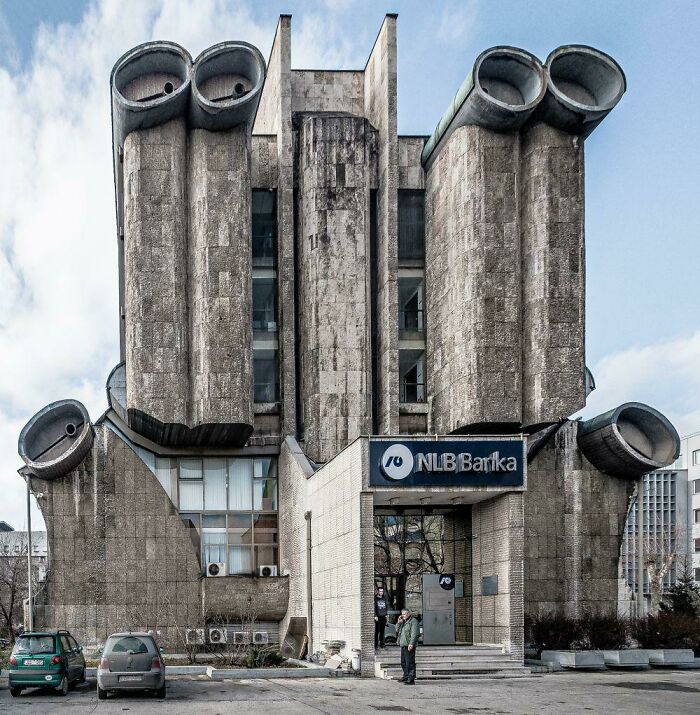
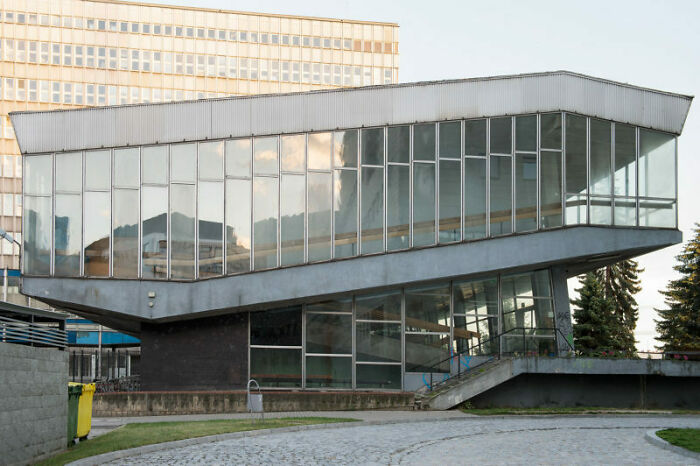
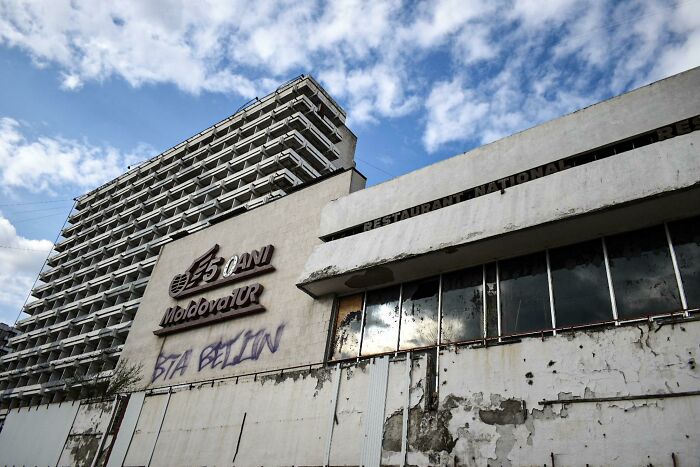
![Dnipro Bus Station [oc] Dnipro Bus Station [oc]](https://www.boredpanda.com/blog/wp-content/uploads/2023/05/646db1102ad5b_dsaas7uex9671__700.jpg)
